

Case Study On Reliance Jio’s Digital Marketing Strategies
- December 9, 2022

Table of Contents
When RIL Chairman and MD Mukesh Ambani staged a series of announcements in 2016 with the goal of revolutionizing India’s digital ecosystem, the outcome was JIO. “Reliance Jio’ billed as the company’s biggest ever digital bet, has since turbocharged India’s internet use through data and technological breakthroughs.

While the directors continue reinventing “Jio” for Digital India, the brand strengthens its social media presence and adapts to trends. We look at one digital marketing strategy at a time in the Jio social media marketing game.
While evolving into a new-age Internet brand, the brand has generated an exciting ripple in the digital arena. Sameer Makani, Co-Founder and Managing Director of Makani Creatives, comments on Jio’s digital-led strategy , saying that most enterprises today operate online due to simple internet access and that most influencers today exist as a result of it. Given Jio’s dominance in the internet market, he believes it is critical for the company to be among the top five, if not the top, in terms of social media presence.
About Reliance Jio
Remember the time when every person suddenly had two numbers, and our contacts looked something like, “Friend, Friend Jio, Friend 1, Friend 1 Jio…” Yeah! This happened after September 5th, 2016, when Reliance Jio was publicly available.
An Indian telecommunications company, Reliance Jio Infocomm Limited is a subsidiary of Jio platforms. Jio runs a nationwide LTE network that serves all 22 telecom circles. Jio presently offers 4G and 4G+ services, but it is striving to expand to 5G and 6G in the future. With around 42.62 crores (426.2 million) members, it is India’s largest mobile network provider and the world’s third-largest mobile network operator.
Jio announced a fiber-to-the-home service in September 2019, which includes home broadband, television, and phone services. Reliance Industries has raised Rs.1.65 lakh crore (US$22 billion) by selling nearly a third of its stock investment in Reliance Jio Platforms as of September 2020.

Talking about their digital presence, Reliance Jio has a minimum of million followers on Instagram, Facebook, and YouTube individually and thousands of followers on Twitter. How did they manage to get such a large following? How have they maintained it? Let’s find out!
Why Should Marketers Study Reliance Jio’s Digital Marketing Strategies?
Let’s understand Reliance Jio’s digital marketing strategies and how they implemented and achieved success;
1. The 2A and 3R strategies adopted by Jio

Acquisition : People Come to your Website to see what you have to offer
Jio gave free services to its consumers for three months after its commercial launch in September 2016. This strategy worked as a trump card for Jio in gaining customers. Jio was able to gain 16 million subscribers in just one month.
Activation : They go through a variety of activities
The finest experience was delivered to the users, which had never been supplied by any telecom service provider before.
Retention : Customers return
Jio didn’t just leave it there. They extended the free services to subscribers for another three months on the occasion of the new year in 2017. Jio became the first telecom firm to offer clients a free six-month trial period.
Referral : Users are encouraged to invite others
Customers took up the role of preacher. Jio’s company grew as a result of strong customer feedback and user experience.
Revenue : Customers purchase our goods or service
By slashing rates to a tenth of what they were before, Jio was able to increase revenue, which was a key aspect of the company’s success.
2. Moment Marketing Strategies by Reliance Jio
Jio has always been a force to be reckoned with when it comes to in-the-moment marketing, doling out trending content, and jumping on the bandwagon. Moment marketing is known for gaining a lot of attention and becoming a hit with people who are always checking their feeds for new and amusing material.
View this post on Instagram A post shared by Jio (@reliancejio)
3. Staying local
Jio encourages Indian heritage in their social media messaging, staying true to the “humara India” and #VocalForLocal culture that has grown over time. From wishing everyone a happy festival to creating material with Indian themes and as much Bollywood as possible, the brand has taken a very wholesome Indian approach to its digital branding.
Reliance Jio’s digital marketing strategies & Case Study
Now, let’s go through Reliance Jio’s digital marketing strategies on every social media platform;
Reliance Jio’s social media marketing strategies
From perfectly sensing the pulse of the audiences through timely engagement in moment marketing to aptly leveraging content marketing tactics to crafting fantastic stories as needed, Reliance Jio’s social media approach has been all things ‘Dhan Dhana Dhan.’
Here is an overview of Reliance Jio’s social media channels;
| 1 Million | 0.16% | |
| 2.5 Million | 1.29% | |
| 858.3K | 0.02% | |
| YouTube | 3.17 Million Subscribers | 0.10% |
Jio’s Instagram Marketing Strategies
Jio has over a million Instagram followers ( @reliancejio ). You’ll discover a range of promotional pieces in their content bucket, posts showing their products, and posts featuring their workers.

They’ve recently posted about the upgradation to 5g services & advanced Indian medical fields, festive offers of Jio, a number of posts about their work with the IPL, congratulating each team on their victories and engaging their cricket supporters. That’s how it keeps on updating & engaging with the audience on Instagram.
Jio’s Facebook Marketing Strategies:
Jio’s Facebook page has the most number of followers, making it their most popular and successful social media account. The aim of their Facebook account, as evident through their bio, is to drive people from their social account to the website. Their bio reads,
“Lives change when they are connected. Imagine a life where every Indian could stay connected to friends and family, stay true to their dreams and passions, and stay inspired and empowered – every second of every day. At Reliance Jio, we believe every Indian deserves this life. The Digital Life”.

We welcome you to experience Reliance Jio Digital Life.
Chat now on MyJio App: www.jio.com/dl/livechat
The content posted on Jio’s Facebook page is quite similar to that on Instagram – IPL – related posts, festival posts, contests, stories of employees, etc.
Jio also receives feedback and queries in their comments section, which receive quick and personalized replies along with the name of the person writing to them. This shows the customer that a real person is handling their query and gives them confidence that their issues will be resolved. (Marketers, take notes!!)

Jio’s Twitter Marketing Strategies:
Jio covers over 858.3K followers on Twitter. Jio’s Twitter ( @reliancejio ) page, like its Instagram and Facebook sites, posts the same type of content. Jio responds to its followers’ questions and retweets what others have to say about the firm on a frequent basis.

Similar IPL – related content on Jio’s Twitter page:

Jio’s YouTube Marketing Strategies:
The videos posted on Jio’s YouTube align with those posted on Instagram, Facebook, and YouTube.

Here are some of the important videos on the Youtube channel including the 45th AGM of Reliance Industries Limited.
Jio’s YouTube also has the same videos in different languages to reach local audiences across India. They have a separate playlist for the following languages:
- Telegu
- Malayalam
This is a wonderful initiative and has also received a positive response from the audience. These videos are mostly instruction-based, guiding people to use Jio. They also posted short videos in the form of YouTube shorts as part of their “Lockdown Heroes” campaign.

Reliance Jio’s SEO Strategies & Case Study
Everybody, today, knows of Jio. However, let’s look closely into what you can find when you google Jio.
Website Overview:
With a blue, a darker blue, and white colour theme, Jio’s website is one that is completely service-oriented and allows customers to get their work done. Jio has a website with a ‘great’ domain authority of 66. Their website ensures complete user-friendliness and is easy to navigate. With subtle colours, clear fonts, and even the option to recharge your SIM, get a new SIM, and/or make payments.

Jio’s website has over 4,28,361 organic keywords and brings 1,29,00,206 monthly traffic to its website. These numbers are way beyond average, and are rated as “amazing.”
Their top organic keywords include:
- Jio recharge
- how to connect harddisk to the Jio router

Google My Business Page
If you look at what Jio does, you’ll note that they do a fantastic job of setting up Google My Business sites for each of their locations, but some businesses never get around to doing so. It takes a lot of effort at first, but it pays off in the end, as you can see.

Google My Business reviews
When it comes to local searches, reviews are quite essential. Simply creating a listing isn’t enough, as much as we’d like it to be. You must think about it from the perspective of the search engine. Businesses with more reviews (especially those with outstanding ratings) will rank higher (as seen below) since it gives search engines more data points and shows that people are saying good things about them, hinting that it must be valuable.
Building reviews are one of the most difficult components of local optimization after getting listed. It’s not easy to get positive evaluations, but if you put on your marketing hat and use your imagination, you can do just as well as Jio.

Reliance Jio’s Target Audience Demographics
Audience composition can reveal a site’s current market share across various audiences. Reliance jio audience is 67.24% male and 32.76% female. The largest age group of visitors are 25 – 34 year olds.

Jio’s Top Digital Marketing Campaigns
1. the next generation this children’s day.
Jio celebrated the next generation children’s day with the campaign #JioChildrensDay by asking the next generations to reimagine India & share the idea of future India.
Clebrating the next generation, children’s day Jio’s way with “childlike imagination”
2. Jio’s Lockdown Campaign
Jio’s Lockdown Heroes Campaign honoured the extraordinary stories of some of the company’s network engineers who worked tirelessly to keep the network operating throughout the lockdown. Users would not have been able to continue forward with their lives as smoothly if the pandemic had struck in any other generation, working from home, learning from home, and being amused at home.
Jio’s celebration of the Lockdown Heroes Campaign, which included numerous detailed anecdotes of frontline workers walking through snow, and traveling for several kilometers to work with restricted transportation, encapsulates the genuine essence of ‘connecting lives.’
3. Digital Navratri
Reliance Jio hosted a Digital Navratri, giving Indians a virtual Darshan from the comfort of their own homes via Jio Meet and Jio TV. Jio can be seen giving opportunities for Indians to go about living and celebrating their lives without having to deal with any inconveniences.
When it comes to celebrations, the AGM has become a major event on Jio’s calendar and in the news. The way the videos are put together suggests that it is no longer the “Reliance of Yesterday” , but rather a futuristically ahead brand competing with the world’s finest technological players.
As you can see, Reliance Jio has made inroads into the digital realm to advertise its goods and brand. Do you want to design your own unique strategy? Enroll in Digital Scholar’s online digital marketing course to improve your company’s digital marketing tactics. This course is for anyone interested in learning everything there is to know about digital marketing and how to apply it to their own company.
Are you ready to elevate the image of your organisation to new heights? The best choice to start with is to take our free digital marketing course .
What do you love the most about Jio? Let us know in the comments below!
Written By Digital Scholar
Digital Scholar is a premier agency-styled digital marketing institute in India. Which offers an online digital marketing course and a free digital marketing course worldwide to elevate their digital skills and become industry experts. Digital Scholar is headed by Sorav Jain and co-founder Rishi Jain, who are pioneers in the field of digital marketing. Digital Scholar’s blogs touch upon numerous aspects of digital marketing and help you get intensive ideas of different domains of digital marketing.
Leave a Reply Cancel reply
Your email address will not be published. Required fields are marked *
Save my name, email, and website in this browser for the next time I comment.
Recent Posts

How To Create YouTube Channel in 4 Simple Steps for Beginners in 2024

Instagram Story Downloader: Top 10 Tools to Download Insta Story

The Ultimate Instagram Statistics In India: You Probably Didn’t Know Before

Top 20 Popular Pages on Instagram in India
- SUGGESTED TOPICS
- The Magazine
- Newsletters
- Managing Yourself
- Managing Teams
- Work-life Balance
- The Big Idea
- Data & Visuals
- Reading Lists
- Case Selections
- HBR Learning
- Topic Feeds
- Account Settings
- Email Preferences
How Working with Competitors Made Jio a Telecom Giant
- Vijay Govindarajan,
- Anup Srivastava,
- Mani Venkatesh

What other companies can learn from its success.
Jio Platforms’ unique experiment of co-opetition with global tech giants combined with its local prowess allows it to address an enormous market of price-sensitive customers. Thanks to its sheer scale, innovation, and unique collaborations, it can offer integrated solutions for retail, grocery, fintech, medical, agricultural, e-commerce, and e-payment needs, in addition to telecom services and home entertainment — at affordable prices. The resulting knowledge, access, business possibilities, and even entertainment opportunities could transform the lives of over one billion people in India. In this article, the authors unpack why Jio has been so successful and what lessons we can learn from its evolution.
More than a traditional telecom business, India’s Jio Platforms is proving to be a disruptor. Jio was launched as a “freemium” service, offering free internet services to price-sensitive Indian customers to increase the adoption rate and scale up the market. Previously, Indian customers, whose average income is about $150 per month , had never had access to such a high-speed internet — bundled with so many apps and digital solutions — at such low prices.
- Vijay Govindarajan is the Coxe Distinguished Professor at Dartmouth College’s Tuck School of Business, an executive fellow at Harvard Business School, and faculty partner at the Silicon Valley incubator Mach 49. He is a New York Times and Wall Street Journal bestselling author. His latest book is Fusion Strategy: How Real-Time Data and AI Will Power the Industrial Future . His Harvard Business Review articles “ Engineering Reverse Innovations ” and “ Stop the Innovation Wars ” won McKinsey Awards for best article published in HBR. His HBR articles “ How GE Is Disrupting Itself ” and “ The CEO’s Role in Business Model Reinvention ” are HBR all-time top-50 bestsellers. Follow him on LinkedIn . vgovindarajan
- Anup Srivastava holds Canada Research Chair in Accounting, Decision Making, and Capital Markets and is a full professor at Haskayne School of Business, University of Calgary. In a series of HBR articles, he examines the management implications of digital disruption. He specializes in the valuation and financial reporting challenges of digital companies. Follow Anup on LinkedIn .
- Mani Venkatesh is the head of the MSc in big data and AI program and is an associate professor in the department of strategy and entrepreneurship at Montpellier Business School (MBS) in France. He possesses over 22 years of academic and industrial experience and served in Fortune 500 companies in various senior management roles for over a decade. His research entails digital transformation strategies and sustainability of new-age enterprises. Follow Mani on LinkedIn .
Partner Center

How Jio is Leading the 5G Race in India [Case Study]

Bharath Jinda
The 5G era is proving to be a game-changer for the Indian telecom industry. The second most populous country in the world is India with a total of 1.2 billion internet users. Indian telecom companies are constantly on the lookout for new innovative ways to boost the growth of digital medium and the market is ripe with abundant startups that seek to disrupt the Industry with smarter supply chains and manufacturing models.
Let's have a look on the Case Study of Jio in the light of how Jio is Leading the 5G Race in India.
Why Reliance Jio is the Market Leader in 5G Uses of 5G and How it Drives Innovation How 5G will Revolutionize the Indian Telecom Industry Need for a Smarter and Affordable Platform-Reliance JioGenNext Platform How Jio is Ahead of it's Competitors FAQ

Why Reliance Jio is the Market Leader in 5G
Reliance Industries owned Reliance Jio is the first of the few Indian companies to launch into the 5G technology space with the likes of global competitors such as Samsung Electronics , MediaTek, Huawei , Ericson, Nokia , Qualcomm who have been implementing rollouts of 5G networks. With the rise of ‘Made in India’ initiatives proposed by the Government of India, In December 2020, the chairman of Reliance Industries, Mukesh Ambani had revealed that his telecom company, Jio, would launch 5G networks in the second half of 2021.
Jio is building the 5G infrastructure by using native developed technology for its hardware, network, and technology components, said Mukesh Ambani the chairperson of Reliance Industries . Reliance has achieved this without any help from Chinese telecom companies such as Huawei and ZTE, being a testament to the AtmaNirbhar campaign led by the Indian government to keep Chinese products out of the marketplace.
The latest news from Reliance Industries said that they had achieved high speeds of 1Gbps in the initial testing phase. The rollouts will officially begin after the spectrum is auctioned.
Uses of 5G and How it Drives Innovation
According to the telecom major Jio, 5G would be integrated with autonomous vehicles, connected drones and remote healthcare services, ultra-high-speed mobile internet speeds and mixed reality which can help in creating more employment.
How 5G will Revolutionize the Indian Telecom Industry
India is one of the most digitally connected countries in the world and to keep this up, we need to maintain a lead and bring the rollout of 5G networks across the nation. There is also a need for affordable smartphones as almost 300 million mobile users in India are caught in the 2G era.
With 5G plans, we need a smartphone that can adapt to this network, and with this comes the need to produce an affordable smartphone. Reliance led Jio, Bharti owned Airtel had successfully demonstrated its capability to rollout 5G wireless service in Hyderabad, beating Jio in the race to be the first Indian telecom provider to run 5G services on its existing commercial network.

Need for a Smarter and Affordable Platform-Reliance JioGenNext Platform
To boost growth in the fields of agriculture, education, healthcare, Infrastructure, Financial Services, Jio platforms have connected with over 20 startups to build world-class solutions for Artificial Intelligence , Cloud computing, Machine learning, IoT, Blockchain etc.
Reliance has partnered with Samsung in a trial to test the 5G network capabilities. Jio also said it is ready with the 5G service and extensive fiber assets which will play a crucial role in the rollout of the 5G infrastructure.
Jio has also partnered with Google and Facebook who cover a vast majority of the internet landscape also hold shares in the company, are also global investors in the 5G tech space. Reliance Jio vision to build a 5G ready network in India before deploying its technology to other countries.

How Jio is Ahead of it's Competitors
Airtel and Vodafone have been serving in the Indian markets since the era of 2G technology and most of its existing consumer base is still on 2G networks which they have to maintain for the users as long as they remain. However, Jio began their service in 2016, in the 4G era, Where 4G is based on computers and thus to upgrade to 5G will not be a hassle for Jio as switching from the 2G.
Is Jio 5G Ready?
Mukesh Ambani announced Jio 5G service will rollout in India in the second half of 2021.
What will be the speed of Jio 5G?
Jio stated that its 5G Technology has already achieved the mark speed of 1 Gbps.
Is Airtel 5G Ready?
Airtel became country's first telco to successfully demonstrate live 5G service over a commercial network in Hyderabad city.
Aside from the rollout of 5G technology, Reliance Jio is also focused on bringing affordable 5G ready phones into the Indian market. Reliance Jio has partnered with Google to make India free from 2G phones. As Jio does not have a 2G infrastructure, the promotion of affordable 4G/5G phones can help Jio add more users on its network.
Must have tools for startups - Recommended by StartupTalky
- Manage your business smoothly- Google Workspace
Cars24 Business Model | How Cars24 Make Money
The world of used cars, which is full of doubt and mistrust, has been waiting a long time for a game-changer. The game-changing factor was the arrival of Cars24, a pioneering eCommerce platform that revolutionized the used automobile market. Join us as we dive into a comprehensive analysis of the
Blinkit Business Model | How Blinkit Makes Money
Putting in an order for groceries was once considered the most difficult task. Shopping for groceries is becoming more pleasurable because of the development of "smart grocery stores" like Nature's Basket, Dmart, Reliance Mart, and others. But now that technology is driving more solutions, online grocery shopping is becoming increasingly
Lenskart Business Model | How Lenskart Makes Money
Approximately 64 percent of adults around the world need corrective lenses to see clearly, according to recent studies. Envisioning a society where selecting the ideal eyewear is both a vital must and a truly enjoyable activity. This ambition has come true thanks to Lenskart, an industry pioneer. Both customers' perception
Top 22 Courier & Delivery Franchise Businesses in India
The growth of the e-commerce industry impacted the courier business. Due to more shopping in the eCommerce platform courier business is becoming one of the fastest-growing markets in India nowadays. Courier and delivery companies provide various services starting from the online courier and cargo marketplace and finishing with logistics. There
- Globalization
- Kar Lo Duniya Mutti Mein: The Game Changing Case of Reliance Jio
The Game Changing and Disruptive Entry of Reliance Jio
The entry of Reliance Jio into the Indian Telecom sector has been if not anything, disruptive and game changing. Starting with the sheer scale of its operations wherein it leveraged its existing network of stores and outlets to sell new connections to the consumers, to its humungous size wherein it managed to sign up nearly 200 Million users in less than Two Years, to its aggressive pricing and deep discounting strategies, and its flexible and bundled plans where it offers a handset along with a new connection, the brains behind Reliance Jio, and Mukesh Ambani in particular have left no stone (or rather no mobile tower unturned) in their quest for dominance and supremacy.
Indeed, the awe inspiring entry of Reliance Jio has spurred many experts into commenting that perhaps Mukesh Ambani was fulfilling the vision of his late legendary father, Dhirubhai Ambani, whose dream was to put a mobile in the hands of each Indian and make calling cheaper than a postcard.
While the ad jingle for the erstwhile foray into the Indian Telecom sector before the Ambani brothers broke up was “Kar Lo Duniya Mutti Mein”, or bring the world into the palm of your hands evoked much humor from the viewers, it is only now that such a game changing ambition seems to be fructifying into reality.
Moreover, the recent news that Mukesh’s brother, Anil Ambani, is thinking of exiting the Telecom sector would only strengthen the perceptions that the former is within reach of actualizing the Ambani family dream.
Enter the Dragon: Jio and Disruption
To take examples of how disruptive Jio has been, one has to look no farther the wave of consolidations and mergers and acquisitions happening in the Indian Telecom sector for the last two years. For instance, Vodafone and Idea are close to a megamerger which would make them the largest operator by volume.
In addition, there are numerous other smaller players who are either selling their business lock, stock, and barrel, or piece by piece wherein they exit either the Towers and Physical Infrastructure assets or their user base being migrated to other players.
Apart from this, the fact that the Draft of the New eCommerce policy mentions how the Indian Government is thinking of banning eCommerce firms managed or funded by foreign players from having their own warehouses means that this is music to Mukesh Ambani’s ears as he can then use his extensive network of inventory holding and warehouse places to combine the commerce aspect with the content and the carriage.
In other words, if this policy becomes law, it is envisaged that Jio would be able to capitalize on the 3Cs of Content, Carriage, and Commerce wherein the first is through the multiple offerings on Jio handsets including news, entertainment, and sports channels, the second is through the humungous base of physical and virtual infrastructure along with the user base, and the last C which is commerce would be realized by bundling online and mobile selling and the warehouses for holding inventory.
Indeed, the reputed business publication, Bloomberg, mentions how if Reliance Jio has to make profits, it has to necessarily focus on monetizing the 3Cs and which can only happen if the third C or the Commerce aspect is exploited to the maximum extent possible.
Show Me the Money: Jio and Profitability
Indeed, when talking about making profits, it needs to be mentioned that at the moment, Reliance Jio is focused on building economies of scale and the concomitant efficiencies and leveraging the synergies that accrue from integrating the end to end mobile telephony value chain. further, Jio is narrowly focused on “stickiness” which is the term used to describe how users who once sign up to its offerings would stick to it and for this to happen, its pricing has to be very appealing and its discounting very aggressive.
Having said that, this alone does not guarantee profitability as users once used to freebies would immediately migrate to other players once the Punch Bowel is withdrawn. This is the reason some experts are skeptical about the longer term viability of Mukesh Ambani’s strategy wherein Jio would be forced to come down to Earth and start behaving like other players.
Though Ambani has poured nearly $36 Billion into Jio, the proof of the pudding is in the eating and at some point or the other, there needs to be ROI or Return on Investment in terms of revenues and profits. Moreover, it is also speculated that Reliance is cross subsidizing Jio by investing profits from the other businesses into the mobile arm and such strategies work for a while before reality dawns.
Analysis using Tools
Thus, as can be seen from the discussion so far, these are both the best of times and the worst of times for the Indian Telecom Sector with each player outdoing the others in offering discounts and freebies spurred by Jio and while the party is continuing at the moment, nobody is sure when the music would stop.
With this in mind, we can now turn to the SWOT, Porter’s Five Forces, and BCG Matrix Analysis to gain a practical insight into how Jio operates and whether it would be successful in the longer term. Indeed, these tools help us to map theory with practice and are useful in providing a frame of reference for analysis.
Reliance Jio’s strengths lie in its deep pockets with strong brand recall due to its backing by the redoubtable Reliance and its sheer scale and size of operations. Having signed up Millions of users in relatively short time, Jio is poised to reap the benefits of the economies of scale in addition to its leveraging of its existing physical network of stores and outlets that actualize synergies in the process.
The Million (or let’s say, the Billion Dollar) question is when will Reliance Jio make profits. This has led to concerns among investors that it is aping the business model of eCommerce firms such as Amazon which persist despite no significant profits in some markets just to gain market share. Further, sooner or later, investors in Reliance would start questioning as to how long Mukesh Ambani can cross subsidize Jio, though the tag of India’s Richest person means that he would be given more time.
Opportunities
Reliance Jio has a large opportunity in entering the eCommerce sector given its physical network and the virtual assets including the very large user base which can all combine to give it the much needed traction in Horizontal and Vertical Integration. Indeed, Jio has already integrated itself vertically following the lead of Dhirubhai Ambani, who was a strong believer in this business model. In addition, it can create complementarities to its existing businesses and this is a significant opportunity.
Incumbent players are giving Reliance Jio a run for its money as can be seen from the all out price war and the aggressive consolidation and mergers and acquisitions. In the future, Jio has to draw a line in its attempts to create market share without bringing in the Moolah. Apart from this, the entry of Jeff Bezos into the Indian Market poses some risks to its horizontal integration strategies.
Porter’s Five Forces
Threat of Substitutes
As mentioned earlier, by actualizing the vision of making calls cheaper than sending a postcard, Jio has ensured that consumers would stick to it rather than migrating to substitutes. Having said that, it is also the case that Jio has to be more aggressive in rural India where the consumers still persist with the age old and time tested modes of communication.
Bargaining Power of Buyers
The Indian Telecom sector is a consumer’s dream come true with multiple players wooing them aggressively and this in turn, ensuring strong buyer power. Though Jio is attempting stickiness and brand loyalty, it needs to be mentioned that Pre Paid consumers are known for shifting brands as per their convenience. Thus, Jio needs to focus more on Post Paid connections than it is doing now.
Bargaining Power of Suppliers
Given the deep dependencies between suppliers and telecom players, it is no wonder that the latter find it hard to have the upper hand with the former. Having said that, the Ambani connection means that very few suppliers would risk being cut off from the Spigot and hence, Jio does have more leverage over suppliers than other Telecom players. Of course, its integration strategies mean that suppliers do hold some cards as the parts of the value chain once established would need much effort to find alternative suppliers.
Entry and Exit Barriers
With high entry barriers, thanks to governmental policies and the capital intensive nature of the business, Jio can rest easy as far as competition from new entrants is concerned. In addition, while it was earlier though that exiting the sector is easy, the experiences of Vodafone, and even the other sibling, Anil Ambani, have surprised many as far as the ease with which exiting the sector is concerned.
Competitive Rivalry
An intensely competitive market means that Jio has to be on its toes to ward off competitive pressures and though it has so far remained ahead of the curve and other players, longer term prospects are yet to be clear. Moreover, with the real time changes in the fortunes of the telecom firms, all bets are off for the longer term and most analysts these days are focusing on the near and the medium terms.
Relative Market Share
| Market Growth Rate | Stars Jio | Question Marks |
| Cash Cows | Dogs |
The BCG (Boston Consulting Group) Matrix is an easy to use tool for evaluating different business units of a single conglomerate about the potential and the relative positioning of each vis-a-vis the other units. As has been mentioned throughout this case study, Jio being one arm of the vast Reliance behemoth has to be evaluated with regards to the other arms of the conglomerate.
For instance, while Jio at the moment is a Star due to its high relative market share and the growing Indian Telecom market, it can turn into a question mark either due to its reaching a plateau as far as market share is concerned, or due to the saturation of the overall market.
Having said that, it also has the potential to become a Cash Cow if it stabilizes over the longer term in a strategy that balances market share growth with overall market growth. Further, Jio is already showing signs of maturing as a business unit and hence, this is a likelier outcome than it turning into a question mark vis-a-vis the other business units of Reliance.
As for turning into a Dog over the longer term, this is not really an outcome that is certain given the already deep linkages it has established in the Indian Market and the strong brand connections it has with the Indian consumer. Thus, it is our evaluation that Jio is likely to stay in the first column rather than the second one in the above mentioned BCG Matrix.
As can be seen from the analysis so far, Jio is poised at an inflection point where the path it chooses now would determine its future prospects. Moreover, with Mukesh Ambani having staked his reputation on its success, both Jio and he cannot afford to let it lapse or fade away in the same manner in which Anil Ambani’s foray into Telecom fared. Thus, the Hindi Phrase, Jio Jee Bhar Ke, seems to be apt as far as how the future would unfold is concerned.
Related Articles
- Trumped up Trickle Down Economics
View All Articles
Authorship/Referencing - About the Author(s)
The article is Written and Reviewed by Management Study Guide Content Team . MSG Content Team comprises experienced Faculty Member, Professionals and Subject Matter Experts. We are a ISO 2001:2015 Certified Education Provider . To Know more, click on About Us . The use of this material is free for learning and education purpose. Please reference authorship of content used, including link(s) to ManagementStudyGuide.com and the content page url.
- What is Globalization ?
- The Global Economic Crisis
- Introduction to the Global Economy
- Causes of Global Economic Crisis
- Impact of Global Economic Crisis
- Globalization - A Win-Win Situation
- Drivers of Globalization
- Globalization and its Discontents
- A Global Perfect Storm in 2013
- Globalization and Economic Crisis
- The Global Economic Crisis of 2008 and the Retreat of Globalization
- Lack of Regulation and the Crisis
- Global Recession and Finance
- Paradigm Shift in Global Economy
- Derivatives & Global Financial Crisis
- Global Economic Crisis: Too Much Debt
- Indian Economy in a Downward Spiral
- Future of Globalization after Crisis
- Effect of Globalization on Young Workforce
- Globalization and Young Workforce
- Globalization and Its Effect on American and Asian Leaders
- Globalization & Trickle Down Theory
- Effect of Crisis on Indian IT & BPO Sector
- Typical Responses to the Global Crises
- New Frontier for Globalization
- The Global Move towards Austerity
- The Double Whammy of Austerity and Unemployment Confronting the West
- International Capital is Country Blind and Seeks Returns instead of Sentiments
- How the Economic Boom of 1990s and 2000s Resulted in Debt, Environmental Destruction and Inequalities
- Historical Origins of the Present Global Economic Crisis
- Why We Should Not Let the Present Global Crisis Go Waste and Make Positive Changes
- Why Reforms are the Only Answer to the Current Crisis Confronting India
- The Great Deleveraging and the Reason why the Global Economic Recovery would Falter
- BRICS: The Next Frontier for Investors
- Investing in Sin Industries: Are They Worth the Hassle ?
- The Future of Energy
- The Future of Work
- Future of Work and Its Impact on Students and Professionals
- New Emerging Markets: Mexico, Indonesia, Nigeria and Turkey (MINTs)
- The Rise of Impact Investing and its Relevance to the 21st Century
- Ageing Populations in the West and their Impact on Healthcare Management
- A Comparison of Healthcare Systems around the World
- The Pitfalls of the Canadian Healthcare System
- Medical Tourism and its Potential for Developing Countries
- The Benefits of Automation for the Healthcare Sector
- Healthcare Systems and their Functioning During Hard Times
- The Need for Accountability in the Healthcare Sector
- The Passage of Health Care Reform (Obamacare) and its Implications for the US
- The Role of Electronic Healthcare Records in the Healthcare Sector
- Why is HealthCare Expensive in the United States ?
- Is India on the Brink of a Serious Economic Crisis?
- The Healthcare Sector must cater to all sections instead of only for those who can pay
- What is Health Insurance and the Different Health Insurance Systems around the World
- The Shock of Gray and Its Implications for the Healthcare Sector
- Why Europe is Broke and no amount of Central Bank Monetary Easing would Help
- Is India the Next China in Terms of Economic Growth ?
- How to Leverage the Demographic Dividend and Manage Demographic Deficit ?
- Why Growth is Stalling around the World ?
- Top Five Challenges Facing the Chinese Economy
- Top Six Economic Consequences of the Refugee Crisis
- The Ugly Face of Contract Farming
- What is Crop Insurance - Risks and Its Future
- Doing Business in India
- Robot Advisors in Asia
- Tough Times for the Indian IT Sector
- International Monetary Fund and “Fake” Austerity
- Why a United States Recession Seems Imminent ?
- The Potential Slowdown in Indian Information Technology
- Boardroom Battles at the Tata Group
- Why Trump’s India-China Comparison is Senseless ?
- India’s Demonetization Policy: Will it Work ?
- Demonetization and Its Impact on the Indian Economy
- Digital Payments: What they are, How they Work, and their Benefits and Problems
- The Promise and Peril of the Digital Economy
- Move to a Digital Economy Cannot Happen Without the Government Providing the Ecosystem
- Chinese Foray into European Economy
- What Does a Trump Win Mean ?
- Why Donald Trump Will be able to Stop Outsourcing ?
- Free Immigration and Welfare State
- Getting Mexico to Pay for the Wall
- Is NAFTA as bad as Donald Trump says it is ?
- The Economics of Drug Prohibition
- The Economic Consequences of the War on Drugs
- The Reeling Scottish Economy
- Is Australia Really Recession Proof ?
- South Korea: A Stunning Success Story
- Saudi Arabia’s Cash Crunch
- Socialism and Prosperity in the Nordic Countries
- How Governments, Businesses, and Individuals Can Survive the Age of Automation
- Why Governments, Businesses, and Other Stakeholders must prepare for the Coming Age of Longevity
- How Firms and Corporates Grow in any Economy
- The H1B Visa Conundrum
- The Negative Impact of H1B Visa Reforms
- Can Jobs be Stolen ?
- The Many Disruptions of the Indian Telecom Sector
- Rebuilding the Greek Economy
- Will Automation Kill the Economy ?
- Should Robots be Taxed ?
- The Internet of Things
- How Internet of Things (IoT) Will Impact Our Daily Lives?
- The Consequences of an Indo-American Trade War
- Is a Pollution Tax Worth it ?
- Is Dubai Really Tax Free ?
- The Chinese Internet Story
- Privatization of Water
- Economics of the Electric Car
- Rebuilding Americas Inner Cities
- Rehabilitating the American Retail Worker
- Why Nations and Firms must Pursue Growth, but, Sustainably and Responsibly ?
- Different Growth Strategies for Firms Aiming to Become Market Leaders
- The Business Model of Amazon
- The Canadian Housing Bubble
- The German Small and Medium Enterprises (SME) Story
- 5 Ways Trump’s Tax Cuts Could Go Awry
- Managing the Millennials: Some Approaches
- What Marketers Need to Know and Do to Market to Millennials
- Will the GST (Goods and Services Tax) be the Game-Changer for the Indian Economy?
- Rags to Riches and Back: The Story of Chinese Boom and Bust
- The Problems with Protectionism
- Multinational Companies (MNC’s) in the Era of Protectionism
- The Singapore Growth Model
- How do Firms such as Uber, AirBnB, and Upwork Compete in the New Digital Economy ?
- Causes for the Present Slowdown in the Indian Economy ?
- Will London Still be the Financial Capital of the World ?
- Houston Disaster and Federal Flood Insurance
- Can the Government be Run Like a Business?
- The Business Model of AirBnB
- Is this the New Normal for the Indian Economy?
- The Argument for Privatization of Airports
- ERISA Act - The Government Mandated Stock Market Crash
- Immigration in the Age of Trump and Brexit and What Potential Immigrants Can Do
- Global Race between American and Chinese Firms for Profitability and Survival
- Challenges Facing Indian Corporates Operating in a Low Growth Environment
- Demonetization, One Year On: The Good, the Bad, and the Ugly
- What the Current Wave of Protectionism and Populism mean for the Future of Globalization and Free Trade
- How Global Firms can Benefit from the Worldwide Rush into Renewable Energy Sources
- Turning the Heat On: A Case Study of the Indian Solar Industry
- The Kansas Experiment
- Prospects for the Indian Economy in 2018: Turbulence, Recovery, or Steady Growth?
- Amazon’s Tax Evasion Game
- Game Changing Digital Governance Ideas: The Case Study of Aadhar in India
- Chinese Ties with Eastern Europe
- Does NAFTA really Benefit Mexico?
- How Genuine is China’s Growth Story?
- The Apple iPhone Controversy
- Apple Inc. Gets a Tax Bonanza
- What the Indian Economy Needs to Do Right Now: Create Jobs, Jobs, and More Jobs
- What Makes Some Cities and Regions Hotspots of Innovation
- Economic Impact of the Failed Coup in Turkey
- How Uneven and Unequal Growth is Fueling Social Unrest Worldwide
- How Low Skilled Workers Face an Uncertain Future and What They can do About it
- The Economic Impact of Cape Town’s Water Crisis
- Google: Conflicts of Interest
- The Benefits of Buying Local
- The Misguided Saudi Bailout
- The Economic Effects of Digital Distractions
- The New Economics of the Music Industry
- Maldives: The Latest Victim of Chinese Debt Diplomacy
- Amazon’s Foray into Shipping
- The Great American Tariff War
- Why India Must Urgently Address its Out of Control Urban Crisis?
- The High Cost of Traffic Jams
- The Why and How of Cities Worldwide Competing in a Race to Attract Investments
- Why Some Pharmaceutical Drugs are Very Expensive?
- The Ugly Side of Pharma Economics
- Fiat Currency and Trade Deficit
- What are Trade Wars and How Do They Affect Economies, Businesses, and Individuals?
- Two Myths Surrounding American Economic Policy
- Amazon’s Vertical Integration
- China’s Organized Intellectual Property Theft
- China’s Emerging Power in Latin America
- Impact of Trump’s Tax Plan on Outsourcing
- Why are Wages Not Rising in America?
- The Rise of India as a Manufacturing Hub
- Can Multinationals Rein In The National Rifle Association?
- Handling the Dreamers Crisis
- How Sports Became Big Business and Its Implications for All Stakeholders
- Corporate and Individual Strategies to Respond to the Protectionism Worldwide
- The Walmart-Flipkart Deal and Its Implications for the eCommerce and Retail Sectors
- Implications of Emerging Trends in Tourism for Developing Countries and Societies
- Case Study of the Indian Aviation Sector: Soaring High or Turbulence Ahead
- Early Bird Catches the Worm: Why First Mover Advantage Matters to Everyone
- Why Viewing Global Trade in Zero Sum Terms is Shortsighted and Self Defeating
- How Singapore Became a World Class Regional Financial and Commercial Hub
- Economic Shocks, Creative Destruction, and Their Effects on Nations and Individuals
- Historic Greek Debt Relief Deal and the Lessons for Other Nations from this Crisis
- Barriers to India achieving Double Digit Growth
- Effects of FIFA World Cup on the Economy
- Germany: An Economic Powerhouse
- Looking beyond BRICS for the Next Economic Hotspots
- Why the World Needs an Urban Rejuvenation for Sustainable Urbanization
- Missed Call: A Case Study of the Indian Telecom Industry in the Post Liberalization Era
- What is FOMO (Fear of Missing out) and how it Impacts all of us in the Digital Age
- United We Stand, Divided We Fall: Can the European Union Survive as a Cohesive Unit?
- How to Prepare for a Future of Digital and Physical Convergence
- Smart Cities - What they are, How Realistic are they, and what can be done
- Has the internet lived up to its promise of an Egalitarian and Just World?
- The Emerging Connected Future and Digital Utopia and What it Means for Us
- The Power of Technology Firms over Our Lives
- Why the Indian Education Sector is Badly in Need of Reforms and Revamp at all Levels
- Masters of the Universe: A Case Study of the Global Investment Banking Sector
- The Economic and Foreign Policies of President Trump and How They Affect Corporates
- The Implications of the Global Debt Trap for Countries, Businesses, and Individuals
- What is Ease of Business rankings and why do they matter to countries like India?
- The Push towards Digital India: Hopes, Prospects, and Realities
- The State of the Indian Economy - Choices before Indian Voters in an Election Year
- California’s Proposed Mileage Tax
- The Link between the Drug War and Immigration
- What is Custo Brazil
- The Misconceptions about Poverty
- How Chinese Corporations Are Going Global?
- Switching Over From Socialism to Capitalism
- The Economic Blockade of Qatar
- The AT&T - Time Warner Merger
- Strong Medicine: A Case Study of the Indian Healthcare Sector
- The Air India Fiasco
- The Argument against Planned Obsolescence
- Lionel Messi and Cristiano Ronaldo: Convicted Criminals?
- The Rise of E-Sports
- The IMF Led Tax Reforms in Jordan
- Braked Acceleration: A Case Study of the Indian Automobile Industry
- The Argentine Currency Crisis
- Bernie Sanders Guarantee Jobs Proposal
- China’s Interest in Venezuela
- The Mouse Charmers: A Case Study of the Indian Information Technology Industry
- Effects of Donald Trump’s Withdrawal from the Iran Deal
- Finland’s Failed Universal Basic Income Experiment
- Immigration: The Key to Canada’s Economic Future
- How Bundled Healthcare Works?
- The Economic Challenges Facing Russia
- The Economic Implications of Facebook Data Breach
- Turkey’s Overheating Economy
- Spotify: A Music Streaming App Worth $20 Billion!
- The Free Healthcare Debate
- The Fuel Price Conundrum in India
- The Gender Pay Gap Debate
- The Impact of the Strengthening Dollar
- The Importance of Infrastructure Sector
- Hamesha Acche Din: Some Trends in the Indian FMCG Sector
- The Resource Curse: The Problem with Commodity Dependence
- The Seattle Homeless Tax Conundrum
- The World of Private Equity
- Top 5 Economic Myths
- Venezuela Mafia Offer to India
- Why The Big Tech Monopoly Needs To Be Broken?
- Ill Effects of a Sino American Trade War
- How A Private Money Market Would Work?
- Nation Branding
- The Financial Effects of the US Government Shutdown
- The Problem with Antitrust Laws
- Why Electric Cars Aren’t Really Environment Friendly?
- National Competitiveness - Meaning and Its Myths
- China’s Objectives behind the Belt and Road Initiative
- The Beneficiaries of US-China Trade War
- The Kentucky Pension Problem
- The Laissez Faire Approach To Immigration
- The Problem with the United States Postal Service
- Why Facebook Wants To Be Regulated?
- The Impact of AMLO Win on the Mexican Economy
- India’s New Draft E-Commerce Policy
- Fighting a Price War
- The Problem with Modicare
- Economic Challenges Facing Imran Khan in Pakistan
- Wage Increases and Tax Cuts
- Economic Impact of the River Interlinking Project
- E-Pharmacy in India
- Can Pakistan Survive Without Economic Aid?
- Indias Angel Tax
- Should Infrastructure Spending Be Centralized?
- Facebook’s $120 Billion Debacle
- Should Prices Always Rise?
- Viking Economics
- Why India Should Abolish Personal Income Taxes?
- How Countries Can Reduce Tax Evasion
- The Economic Impact of Cheap Oil
- Rapid Business Growth Must Not Be At The Expense of Quality, Safety, and Reliability
- The Pros and Cons of Amazon’s and Walmart- Flipkart Long Game in Indian eCommerce
- Why the Business and Commerce Battles in the Digital Age are over Data as the New Oil
- Why India Must Revamp its Education Sector If it Wants to Become a Global Powerhouse
- Why Obamacare Wasn’t Really Health Insurance?
- The End of the Indian IT Sector
- Different Types of Online Business Models
- Was Hillary Advocating Trickle Down Economics?
- What Are Mobile Wallets?
- France Faces an Economic Emergency
- Is the Global Economy headed for another Recession and what are India’s Prospects?
- What Would Happen If America Leaves NAFTA?
- Europe’s Economic Woes
- The Facebook Debacle and the “Own Your Data” Movement
- The Pros and Cons of Defense Spending
- Trade Tariffs and the American Petrodollar Supremacy
- The Impact of GDPR on Business
- Trump’s $12 Billion Farm Bailout
- Why Are Industrial Companies Acquiring Tech Startups?
- Apple’s Trillion Dollar Achievement and Also Some Forthcoming Challenges
- Can India Really Boycott Chinese Goods?
- Car as a Service (CaaS)
- Europe’s Controversial Common Agricultural Policy
- Has The Greek Crisis Ended?
- How Companies Are Avoiding Tariffs
- Why Did the Indian Rupee Crash?
- Why Tax Harmonization in the Eurozone Is a Bad Idea
- How the Sharing Economy Is Different
- The Great South African Land Grab
- The Ranbaxy Fiasco
- The Turkish Collapse and Its Effect on Europe
- America’s Response to China’s Belt and Road Initiative
- The Introduction of Property Tax in China
- Data Localization: An In-Depth Analysis
- Factors behind the Rise of the Swiss Economy
- Has The Fed Gone Crazy?
- Is Amazon’s Minimum Wage Announcement Altruistic?
- Symptoms of an Overheating Economy
- The Effect of Rising Oil Prices on the Indian Economy
- The Facebook Data Breach
- The New NAFTA Deal
- Universal Broadband: A Basic Human Right?
- Will Crowdfunding be Enough to Build Pakistani Dams?
- Zimbabwe’s Road to Economic Recovery
- The Bangladesh Growth Story
- Cambodia and Chinese Debt Trap Diplomacy
- Donald Trump and the Rise of Reality TV Governance and Lessons for Other Leaders
- How Can Iran Circumvent American Sanctions?
- Italy’s Newest Crisis
- What Is China’s Deleveraging Strategy?
- Cannabis Legalization: Impact on Canadian Economy
- Cloud Kitchen: The Newest Innovation in the Restaurant Business
- Universal Basic Income in India: Examining the Arguments For and Against the Proposal
- Economic Consequences of Khashoggi Murder
- Are Smart Cities The Answer to Urbanization of the World? Examining the Pros and Cons
- Why Radical Disruption Is Not Always Beneficial: Lessons from Demonetization
- International Monetary Fund: A Closer Look
- Do Farm Loan Waivers and Bank Bailouts Make for Sound Economic and Fiscal Policies?
- Power Shift: How the Internet Has Spawned a New Class of Powerbrokers in All Fields
- How Algorithms Rule Our Lives and What Businesses, Consumers, and Citizens Can Do
- Top Trends Businesses Have to Look Out for in 2019
- Is the World Economy Dependent on America?
- The Brazilian Economy under Bolsonaro
- The Great Indian NBFC Crisis
- The Saudi-American Financial Relationship
- Will Pakistan Ever Be Able to Pay Back Its Loans?
- The Facebook Meme Controversy
- India’s New E-Commerce Guidelines
- Tesla Tax Breaks and Nevada's Economy
- Economic Effects of Government Shutdown
- The Ubiquitous Smartphone and How It Has Transformed Business and Commerce
- Impact of Crime on South African Economy
- Seattle’s Homelessness Crisis
- The Economics of Code Sharing Agreements
- The Huawei’s Conundrum
- Why Income Taxes Should Be Abolished?
- Why The Shutdown Is Only An Eyewash?
- Can India Really Guarantee a Minimum Income?
- China vs. Taiwan: An Economic Comparison
- Why Wealth Tax has been Abolished All Over the World?
- How the Philippines Beat India at its Own Game
- The Economic Effect of the American Deep Freeze
- Amazon Pulls Out of New York HQ2
- The Battle In the Automobile Aftermarket
- Is India’s Financial Onslaught on Pakistan Really Effective?
- Private Equity in India
- Who are HNIs and why they Matter in Both Positive and Negative Ways
- Pros and Cons of Opportunity Zones in America
- Should There be Reservations in the Private Sector and the Alternatives for Social Justice
- Why The Brexit May Be Beneficial for Britain?
- The Economics of Electronic Healthcare Records
- Germany's Economic Decline and the Fate of The Eurozone
- How North Korea Survives Sanctions?
- Why Jet Airway's Problems are Symptomatic of the Troubles in the Indian Aviation Sector
- Banning of Unregulated Deposits in India
- Economics of Mobile Phones in Africa
- How 5G Will Affect Businesses?
- How Elections Impact The Economy?
- Economic Impact of Pakistan’s Oil Discovery
- How The Chinese Slowdown Hit Apple?
- Pharmacy Benefit Managers: The Root Cause of High Healthcare Prices
- The Economics of Nuclear Weapons
- China’s Crackdown on the Gaming Industry
- Crackdown on Indian Credit Rating Firms
- The Economic Riots in Frances
- The Financial Effects of An Indo-Pak War
- Trump and the American National Emergency
- How Effective Are Sanctions In Enforcing Compliance and When Do They Backfire?
- The Economic Challenges before the Next Indian Government and Some Solutions
- How Crony Capitalism has Crippled the Indian Economy and Rendered it Uncompetitive
- Why Are American Companies No Longer Manufacturing Cars?
- Economic Impact of the Boeing Fiasco
- Executive Pay: The Curious Case of Carlos Ghosn’s Arrest
- Why Are Oil Prices Changing Gears?
- Government Spending vs. Government Taxation
- The Economics of the Caravan Crisis
- New York: Amazon’s Choice for HQ2
- The Rise of the Global Nomad and what it Means for all of Us and the World at Large
- America’s Municipal Debt Problem
- Donald Trump’s Shady Financial Dealings
- Psephology and the Art and Science of Getting Election Outcomes Right with Accuracy
- The European Digital Tax
- Nigeria: A Strange Mix of Poverty and Oil Wealth
- The Apple “Credit Card”
- No Matter Who Wins the Elections, the Indian Economy is headed for Turbulence Times
- The Problem with India’s Proposed Universal Basic Income Scheme
- The Digital Menu and the Restaurant Industry
- Is the American Dream Over? a Critical Commentary on the Future of the United States
- The Effect of the Trade Deal on American Farmers
- The Green New Deal
- Is the Indian Economy at Risk of Turning into another Greece or Thailand?
- The Two Conflicting Theories of Recession
- Why is the Green New Deal Being Equated to Socialism?
- Why Is India Following a Loose Monetary Policy?
- Brexit and the fall of British Steel
- Why is Sweden Facing a Currency Crisis?
- Drug Counterfeiting in India
- Economic Impact of Sri Lankan Attacks
- How China Destroyed Its Electric Vehicle Market
- Italy’s Citizen Income Proposal
- Focusing on Forecasting
- The Case against Free College Tuition
- The Future of Mobility and Opportunities for Investors, Entrepreneurs, and Businesses
- The Indian Shadow Banking Crisis and its Implications for the Future of the Economy
- The Deal between Pakistan and IMF
- The Instex Payment System
- As the World Ages, are we prepared to deal with the Consequences of the Shock of Grey
- What Explains the Decline of the Left in India and its Resurgence in the United States?
- Can Credit Card Interest Rates be Capped?
- How the Promised Utopia of Technology is Turning into a Perilous Dystopian Nightmare
- Why Indians Must Change Their Work Habits to Become World Class Professionals
- The Interconnectedness between the American Economy and the World Economy
- Canada’s Protectionist Economic Policies
- How will the Sino American Trade War End?
- Debunking the Tariff Myth
- Is Huawei Ban Serving American Interests?
- The Coffee Crisis
- The Diesel Downturn
- The Economics of Tax Amnesty Schemes
- The Fight over Rare Earth Minerals
- The Sino American Trade War: Forced Technology Transfers
- Why the Turkish Debt Situation is Different?
- Are Multinational Companies a Boon or a Bane?
- China’s Wealth Gap Problem
- Digital Cash: Advantages and Disadvantages
- Facebook’s Entry into the World’s Payment Systems
- India’s Automobile Downturn
- Is Israel Really an Economic Miracle?
- Mexico: The Auto Hub of the World
- New Zealand and the Wellbeing Budget
- The Huawei Russia Deal
- The Trade Deal between America and Mexico
- The Economics of E-Waste
- Why a War with Iran would be Bad for America?
- Why are American Medicare Expenses Rising Rapidly?
- Are the Recent Layoffs in the Tech and Other Industry Firms Justified? Some Perspectives
- Is the Indian Economy About to Return to the Decades of the Hindu Rate of Growth?
- Trust is the Key to Building Successful Companies and Great Nations
- Looking Ahead: What 2020 has in Store for Corporates and Some Perspectives
- Do Demography and Poor Economic Conditions Explain India’s Youth Uprising?
- Can Jeff Bezos of Amazon who is Betting Big on India Succeed in His Endeavour?
- The Debate over the Continuity of Policies When Governments Change and Implications
- Why there are Fewer Women in the Workforce and what can be done to rectify this
- Why Facebook must be Prevented from being used to Interfere in Elections Worldwide
- Why is India Turning Inward When it Stands to Gain from Opening up its Economy
- How the Relationship between the Present Government and India Inc. Needs Repair
- Are We Losing Sight of the Longer Term Because of Future Fatigue and Present Shock?
- What Davos teaches us about Networking and Deal-making at the Highest Levels?
- How the Coronavirus Threatens the Global Economy and Lessons to be learnt
- How the Indian Budget 2020 is an Exercise in Wishful Optimism Amidst Doom and Gloom
- Are We Living in a Reality TV Like World? How Does This Impact Business and Society?
- What Happens After the #MeToo Movement? Some Perspectives on the Way Ahead
- Why the Present Job Crisis in India is a Perfect Storm of Converging Trends
- The Pros and Cons of Reserving Jobs for Locals and Regional and Linguistic Chauvinism
- The Changing Role of the CEOs in the Digital Age and What It Means for Them
- Why the 2020 Presidential Election in the United States are Pivotal to Global Businesses
- Are Indian Start-ups and eCommerce Firms Living in Fantasy Land without Profits?
- What India Inc. Expects from President Trump and Likely Outcomes from His Visit
- How the Coronavirus Outbreak Would Change the Way We Work and Live in the Future
- As the World Grind to a Halt, a Look Ahead at What is in Store for the Global Economy
- Is the Coronavirus Outbreak a Black Swan Event and the Lessons from It to All of Us?
- The Need for a New Financial Architecture for the Global Economy and Some Suggestions
- Moving beyond the Lockdowns: What Would be a New Normal Post Coronavirus State
- Will the World Ever Be Normal Again? Examining the Impact of the Covid 19 Outbreak
- How the Covid 19 Outbreak Can Become a Catalyst for Class Conflict and Social Unrest
- The Coronavirus Recession
- How COVID-19 is Affecting Emerging Economies?
- How Has COVID-19 Impacted The Global Supply Chain?
- COVID 19 and Universal Basic Income
- COVID 19 and Monetary Policy
- Coronavirus and the Fiscal Policy
- Coronavirus and the Unemployment Crisis
- The Economic Impact of the COVID-19 Policies
- How Much Should the Government Help Struggling Businesses in Times of Crises
- How the Covid 19 Outbreak Has Exposed the Fault Lines in the Western World
- Is the Worldwide Panic and Hysteria Over the Coronavirus Outbreak Justified by Data?
- Why Businesses Must Prepare for Chaos and Confusion as the New Normal to Come
- Offshoring and Outsourcing Firms in the New Normal and what is in Store for Them?
- Why India Inc. Must Prepare for a Perfect Storm of Converging Crises
- Will Coronavirus Cause a Debt Crisis
- Can Companies Really Exit China?
- COVID 19 and Its Impact on the Technology Sector
- COVID-19 and the Retail Sector
- The Power of Gatekeepers Who Control Data and Information in a Digital World
- The Impact of COVID-19 on Start-ups
- The Impact of COVID-19 on the Global Oil Market
- Impact of COVID-19 on Small Businesses
- Impact of COVID-19 on the Real Estate Sector
- Businesses Feel Electing an American President is Like Choosing Between Coke and Pepsi
- Will the United States Descend Into Anarchy and Civil War After the 2020 Elections?
- What the Chaotic Presidential Election and the Aftermath Reveal About the United States
- Why Corporates Need to be Social Media Savvy in a 24/7 World Driven by Technology
- Will Joe Biden’s Presidency be good or bad for Businesses, Trade and the Markets?
- With Vaccines Being Rolled Out, Can We Expect the World to Return to Normal?
- Why the Chief Technology Officer has become so critical to the Success of Corporates?
- How the Pandemic is a Nightmare for Small Businesses and Ways to Help Them
- Are Women Leaders Better Than Their Male Counterparts? Lessons from the Pandemic
- Why are there so Many Protests Everywhere and What can be Done to Address Them
- If 2020 was bad for Businesses, How Will 2021 Be? Extrapolating the Present Trends
- What is Commercial Arbitration and How Firms Use it to Settle Business Disputes
- Where Does the United States Go From Here and the Impact on Business and Economy?
- Does India Inc. Have a Diversity Problem? Should Indian Firms Do More for Inclusivity?
- Why the Epidemic of Stress is Endemic in the Post Pandemic World and How to combat it
- What is Carbon Neutrality and Why Businesses Must Embrace it before it is Too Late
- Should Corporates Implement Affirmative Action as a Means of Ensuring Social Justice?
- Why the Indian Financial System is in a Mess and How to save it from Collapse and Chaos
- The Bill Gates’ Saga and How Corporates/NGOs Should Handle Executive Misconduct
- The Glocal Approach in Business Is Applying Practical Intelligence in the Real World
- What is China Plus Strategy and Why it Can Become a Game Changer for the Indian Economy?
- What’s Behind the Big Tech Meltdown? Is It a Temporary Blip or a Longer Term Reckoning?
The Successful Business Model of Reliance Jio Decode – Detailed Explaination
By Aditya Shastri
It is the largest mobile network centre in India. It is the third-largest telecom operator in India with 42.62 crore subscribers. Its net income for the financial year 2020 was 12,537 crores. Thus this makes us keen to know the business model of Reliance Jio.
In this blog, we have discussed the business model of Reliance Jio in detail which includes its price strategy, product segmentation, competitor analysis, etc. But before we start with its business model let us know about Reliance Jio as a company.
About Reliance Jio
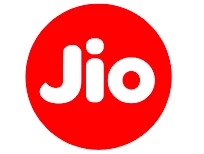
It was first started in the year 2007. Its headquarter is located in Mumbai Maharashtra India. Reliance Jio has a national Network which is LTE which covers all 22 Telecom circles. Jio offers a 4G network it also provides LTE voice-overs to provide voice service.
The Reliance business model is run and owned by Mukesh Ambani. The Jio business model is specified that giving free services to the customers will benefit them with more money as compared to the current other networks as charge prices, Jio provides free voice calls to customers.
Reliance Jio was founded in the year 2007 by Mukesh Ambani. It was made publicly available on 5th September 2016 throughout the world.
What’s new with Reliance?
Here’s what was buzzing around Reliance recently:
- Reliance Jio 5G rollout: Reliance Jio is rolling out 5G services across India, with plans to complete the rollout by December 2023.
- Reliance Jio AirFiber: Reliance Jio AirFiber is a new fixed wireless broadband service that offers high-speed internet access without the need for a wired connection.
- Reliance JioBook: Reliance JioBook is a new affordable laptop that is designed for students and professionals.
- Reliance Retail expansion: Reliance Retail is expanding its presence in India, with plans to open new stores and expand its online operations.
- Reliance JioMart expansion: Reliance JioMart is expanding its grocery delivery service to more cities and towns in India.
- Reliance New Energy: Reliance New Energy is a new subsidiary of Reliance Industries that is focused on renewable energy and clean technologies.
- Reliance battery gigafactory: Reliance is building a battery gigafactory in India that will produce lithium-ion batteries for electric vehicles and other applications.
- Reliance green hydrogen: Reliance is investing in green hydrogen production, which is a clean and sustainable alternative to fossil fuels.
- Reliance education: Reliance is expanding its education business, with plans to launch new schools and universities.
- Reliance healthcare: Reliance is expanding its healthcare business, with plans to build new hospitals and clinics.
- Reliance financial services: Reliance is expanding its financial services business, with plans to offer more banking, insurance, and investment products.
Let’s now understand the target audience of Reliance better with the help of a buyer persona.
Buyer Persona of Reliance
A buyer persona generally refers to the detailed information of an ideal customer of a company. When it comes to Reliance, people from India use it the most. This buyer persona will help you understand the attributes of a regular Reliance user.

Buyer’s Persona
Rajesh Patel
Mumbai, Maharashtra
Profession:
Digital Marketing Manager
- Cost-Efficiency
- High-Speed Internet
- Connectivity and Convenience
- Innovation and Technology
Interest & Hobbies
- Technology Enthusiast
Pain Points
- Network Congestion
- Customer Service
- Privacy Concerns
- Limited International Roaming Options
Social Media Presence
Let us now see the business model of Reliance Jio step by step.
BUSINESS MODEL OF RELIANCE JIO
The business model is used to determine a company’s plan for generating revenue. It determines the products or services the business plans to sell, its identified target market, and any anticipated expenses.
Reliance Jio used a loss-leading strategy which means it sold its products or services at a price lower than the actual price in the market. Reliance Jio initially started giving its users free of cost data and voice calls for a long period of time which helped them gain a large customer base and a higher market share.
Then later after the free data offer was over it started providing its customers with cheaper recharges which helped them to retain their customers.
Let us now see its business model by starting with its pricing strategy.
1. Price Strategy of Reliance Jio
Jio has adapted the best pricing strategy in the market. Jio modifies its pricing strategies every now and then to provide its customers with the best prices in the market. It provides its customers with the cheapest possible prices for its products and services in the market. This helps them to provide the best offers for their customers.
2. Promotion strategies of Reliance Jio
At a time when it comes to making constructive brand awareness, Reliance Jio has taken on a little bit of a hostile marketing strategy on radio, television, magazines, newspapers, and various social media platforms like YouTube, Twitter, Facebook. This marketing is also used by film industry celebrities, it helps them in doing acting in advertisements and joining their brand to work with them.
Let us now see the product and service segmentation of Reliance Jio.
3. Product and service segmentation of Reliance Jio
- JioPages – a web browser for Android devices
- JioChat – instant messaging app
- JioCinema – online HD movie library
- JioCloud – cloud-based backup services
- JioHealth – health-related services app
- JioNews – Platform which provides the latest news
- JioMeet – video-conferencing platform
- JioMoney – online transaction app
- JioSaavn – app for music streaming in English and Indian languages
- JioSecurity – security app
- JioTV – TV Channels streaming service
- JioVoice – VoLTE phone simulator
- MyJio – manage Jio account and digital services associated with it
- Mobile broadband – Its 4G broadband services started all over India in 2016. It offers vice services, instant messaging, and streaming movies.
- JioFiber – In 2018 it started testing new triple play fiber to the homer services which was known as Jio GigaFiber, which provide an internet speed ranging from 100 – 1,000 Mbit/s. It launched its services officially in the year 2019 as JioFiber for its third anniversary.
- JioPhone Next – On 24 June 2021, Mukesh Ambani announced the launch of JioPhone Next. It is a fully-featured Android smartphone co-developed with Google as part of its long-term partnership. The budget smartphone will be launched in India on 10 September 2021.
Let us now see the competitors of reliance Jio.
Top Competitors of Reliance Jio
Here’s the list of top competitors of Reliance JIO:
- Bharti Airtel
- Vodafone Idea
- BSNL (Bharat Sanchar Nigam Limited)
- Tata Docomo
Failed Campaigns of Reliance JIO
Reliance JIO more than often grabs attention with its unique marketing. But, there have been a few times when the campaign failed to connect with the audiences and gained backlash.
Here are a few examples of failed campaigns of Reliance JIO:
- “Welcome Offer” extension: In 2016, Reliance Jio launched a welcome offer that provided free unlimited voice and data services for six months. The offer was a huge success and helped Reliance Jio to quickly acquire a large customer base. However, when the company extended the offer for another six months, it faced a lot of criticism from its competitors. The competitors argued that the extension was unfair and that it was stifling competition in the telecom market.
- “Happy New Year Offer” : In 2018, Reliance Jio launched a “Happy New Year Offer” that provided free unlimited voice and data services for the month of January. The offer was again a huge success, but it also led to a lot of network congestion. The company was unable to handle the increased load on its network, and many customers experienced call drops and slow data speeds.
- “Jio Diwali Dhamaka” offer : In 2019, Reliance Jio launched a “Jio Diwali Dhamaka” offer that provided a free JioPhone to customers who recharged with a Rs. 649 plan or higher. The offer was very popular, but it led to a shortage of JioPhones. Many customers who had recharged with the Rs. 649 plan were unable to get a JioPhone.
- “JioFiber” launch campaign : In 2020, Reliance Jio launched its fixed wireless broadband service, JioFiber. The company launched a massive advertising campaign to promote the service, but it faced a lot of criticism for its misleading claims. The company claimed that JioFiber would provide speeds of up to 1 Gbps, but many customers reported speeds that were much lower.
- “JioMart” launch campaign : In 2021, Reliance Jio launched its online grocery delivery service, JioMart. The company launched a massive advertising campaign to promote the service, but it faced a lot of criticism for its poor customer service. Many customers complained about long delivery times, missing items, and cancellations.
Lastly, we would recommend you watch this detailed video to discover various things you didn’t know about your telecom operator- Reliance Jio📲
With this, we come to the end of the Business Model of Reliance Jio. Let’s conclude this case study in the upcoming section.
As we wrap up our analysis of JIO’s impressive digital marketing strategy, it’s clear that staying up-to-date with the latest trends and techniques is key to success in the digital marketing world.
Whether you’re a marketing professional or just starting out, be sure to check out our free digital marketing masterclass to gain a solid foundation in the essentials of digital marketing.
Who knows, you might just develop the next big marketing strategy like JIO’s! Don’t forget to share your thoughts and comments on JIO’s strategy in the comments below.
Aditya Shastri
Lead Trainer & Head of Learning & Development at IIDE
Leads the Learning & Development segment at IIDE. He is a Content Marketing Expert and has trained 6000+ students and working professionals on various topics of Digital Marketing. He has been a guest speaker at prominent colleges in India including IIMs...... [Read full bio]
Now, I can compare the business model of Jio with other brands and make a wiser choice. Great in-depth analysis.
Submit a Comment Cancel reply
Your email address will not be published. Required fields are marked *
Submit Comment
This site uses Akismet to reduce spam. Learn how your comment data is processed .
Related Posts
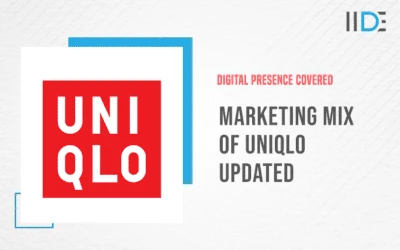
Marketing Mix Of Uniqlo with Updated Company Overview and Explanations
by Aditya Shastri | May 15, 2024
Uniqlo is a Japanese clothing brand known for its high-quality essential pieces formed from the...
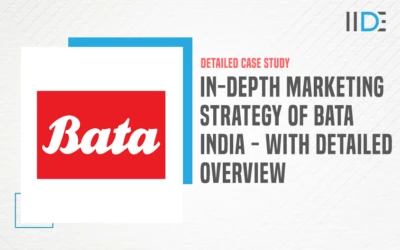
In-depth Marketing Strategy of Bata India – India’s Largest Footwear Company
In this article, we will learn about the marketing strategy of Bata India, the largest footwear...
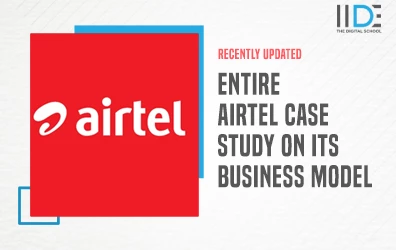
Airtel: Case Study on its Business Model and Marketing Strategy
Bharti Airtel is one of the three telecom giants of India, known for its distinct and engaging...
" * " indicates required fields
I’m Interested in This Masterclass
By providing your contact details, you agree to our Terms of Use & Privacy Policy

8502-002-002
- Upcoming Batch - 19 July
- Next Batch - 21 August
A Case Study on Reliance Jio Marketing Strategy (2024)
Home > Blog > A Case Study on Reliance Jio Marketing Strategy (2024)
- Last updated on December 27, 2023
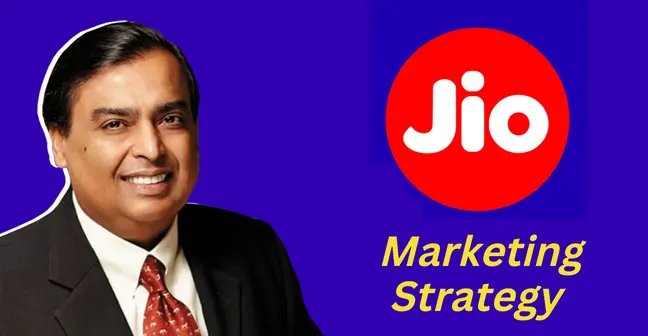
Every person in India is familiar with the word Jio . Do you know the reason behind the popularity of Jio? It’s their marketing strategy. Today, we have brought to you the Jio marketing strategy . We will also tell you about some secret marketing tactics Jio used.
Jio had played a very important role in digitalizing India. We call India, a digital India its all because of Jio. We can’t imagine the growth of industries like digital marketing without Jio. It’s our pleasure to share the marketing strategy of Jio . But before moving towards the marketing strategy, let’s know about the company.
Jio or Reliance Jio Infocomm Limited was started in 2007 by Mukesh Ambani . Currently, they have 413.01 million telecom subscribers in India. Jio sim was first publicly available in September 2016. After the sim launch, Jio offered free data & calling from September to December.
After listening to this news, Everybody got crazy and bought the sims. I remember at that time everyone was having 2 sims in their smartphones. We have saved numbers like this – Rahul, Rahul Jio, Tina, Tina Jio.
Jio is the brand behind digital India. Jio’s 4g services are available all over India. Today millions of Indians can get an education using Jio’s cheap internet. Before Jio, every telecom operator was charging a hefty amount but after Jio’s entry, we all are getting internet at cheap prices.
Reliance Jio is not just limited to selling sims & data plans. They also create products like Jio broadband, Jio wifi, Jio T.V , etc. Now Jio jas launched 5G and is planning for 6G in India. They are also planning for Satellite services where people will get internet through satellites.
Bonus Read: Marketing Strategy of Amul
Reliance Jio Target Customers (Two Categories)

Jio target the mass market. A person who wants an affordable internet data package buys Jio’s subscription. We have divided their target customers into two categories.
Price Conscious
The majority of people come into this category. These people want internet data packages at affordable prices. If Jio won’t provide them the affordable rates then they can also shift to other networks. It is a price market game. Who sells cheap, gets more sales.
Network Conscious
These are the people who want high speed internet and a good network. Let me tell you this with an example. If you visited a village and experienced network issues then you might change the network provider. Another example is if you are a gamer and you need high speed internet. If Jio can give you high speed internet then you will shift to Jio. So this is the second type of target customer of Jio.
Reliance Jio Marketing Strategy
Here are some top marketing strategies used by Jio. You might have not heard about many of these strategies so let’s deep dive into Jio’s marketing strategy.
1) Social Media Marketing Strategy of Jio
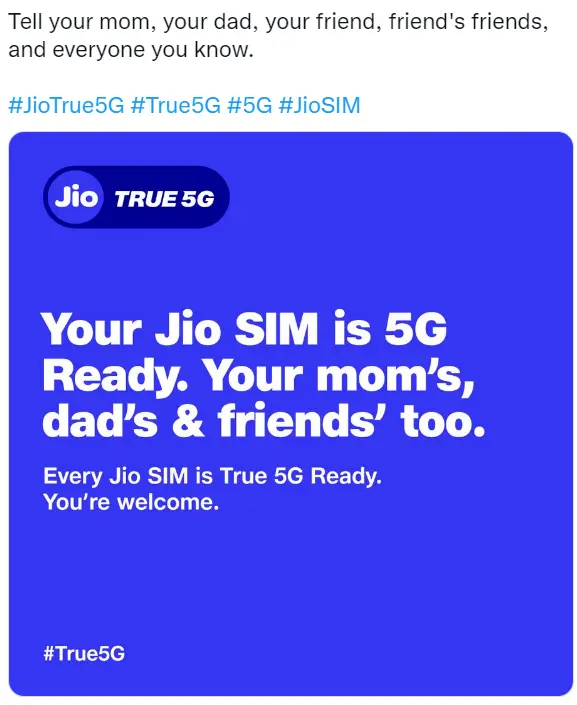
Jio follows a simple yet powerful social media marketing strategy. They create engaging posts which attract more eyeballs. The majority of their posts are promotional on all social media platforms.
In our opinion, Jio needs to work more on its social media strategy. They just post about the new deals & offers over there. Sometimes you can also see posts related to upcoming events or festivals.
The one thing which you can learn from Jio is their customer support on social media. Their customer support representatives reply to the customer’s complaints very fast and help them resolve their issues.
| 2.4 Million Page Likes | |
| 1 Million Followers | |
| 848.4K | |
| YouTube | 3.14 Million Subscribers |
2) Short Emotional Ads
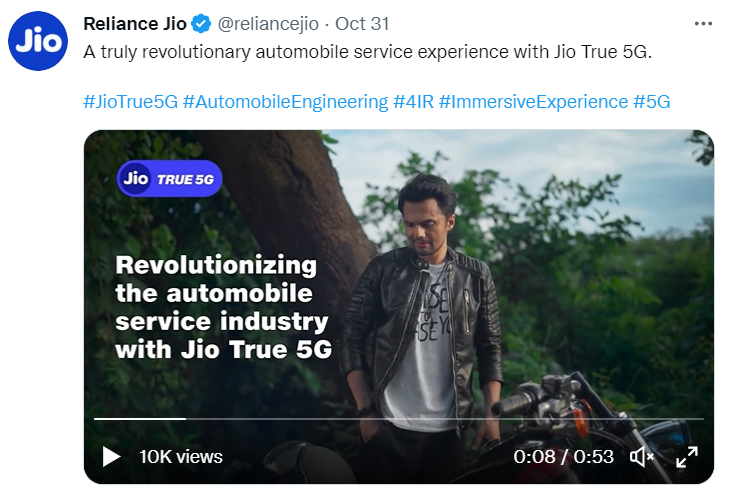
One of the best marketing strategies of Jio is short emotional ads. These ads attract the audience emotionally. The above image is a short ad film for the upcoming Jio 5G. In this ad film, they have taught how Jio 5G can revolutionize the automobile industry.
The Jio team has created some more ad films displaying the benefits of Jio 5G to different industries. You can also apply this Jio marketing strategy to your business.
3) Marketing by Showing Big Purpose
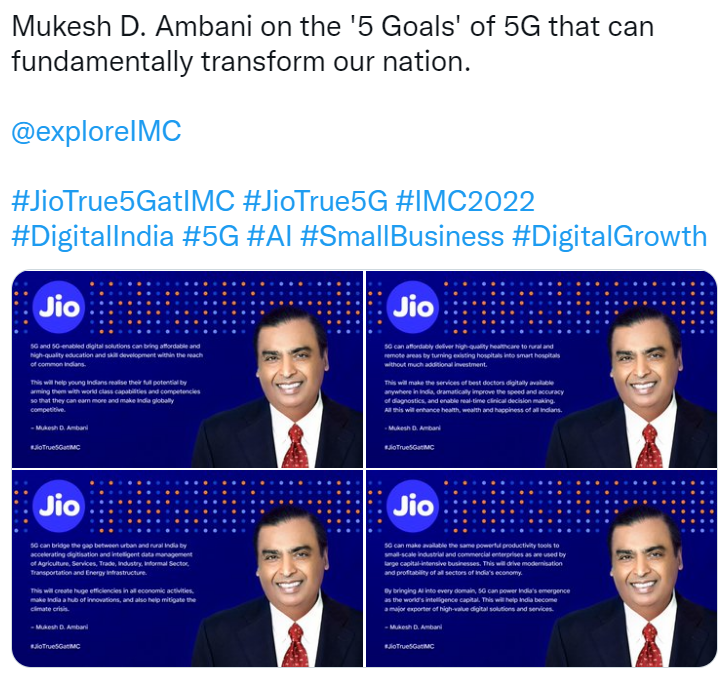
Many people were against the 5G launch that’s why Jio has smartly used this marketing strategy. By showing this, they are telling people that we are not launching 5G for money but for the country’s benefit. It is a wonderful marketing strategy of Jio. Many leaders use it.
4) YouTube Marketing Strategy of Jio

Jio follows a great marketing strategy on YouTube. They have 3.14 million subscribers on the channel. Jio creates this type of informational content teaching people the most basic ways of using the internet. When people will know how to use the internet then they will definitely buy internet data plans from you only.
5) Smart Postpaid Plans Strategy
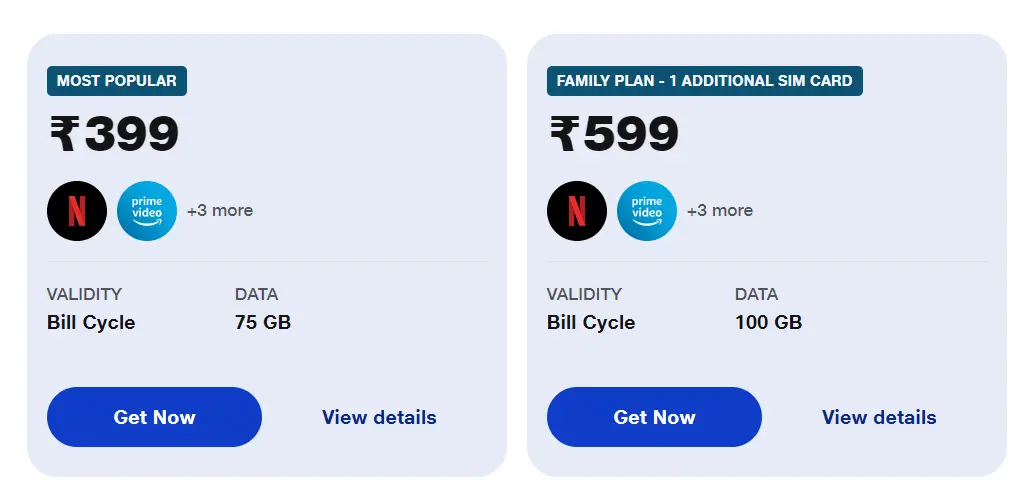
Jio curated their monthly & yearly plans in such a way that it automatically sells. They know what customer wants that’s why many times they offer Netflix & Amazon Prime membership for free. This is also a marketing strategy of Jio where they collaborate with other platforms like Netflix & Amazon Prime.
Popular Marketing Campaigns of Reliance Jio
Jio had done many successful campaigns. Most of its campaigns are related to cricket. All of these campaigns are organized at a big level. These campaigns will not give direct sales to the company but they are best for branding purpose. Let’s know about the top 3 most popular marketing campaigns of Jio.
1) Get Jio Sim Home Delivered For Free
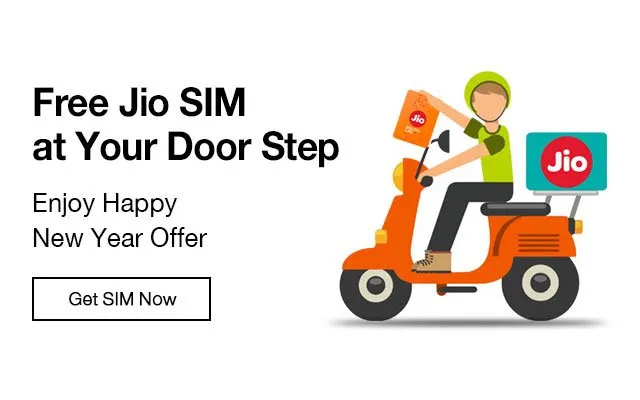
Jio delivers the sim at home for free. This is Jio’s marketing strategy. Before Jio, none of the brands was doing this. Now a person does not require to go anywhere. Jio understands the basic nature of human beings. They know people don’t want to go anywhere, they need everything at their doorsteps. Jio started this service and it got them thousands of customers. The acquisition cost of these customers is very less but the future value will be amazing.
2) ‘Cheer for India’
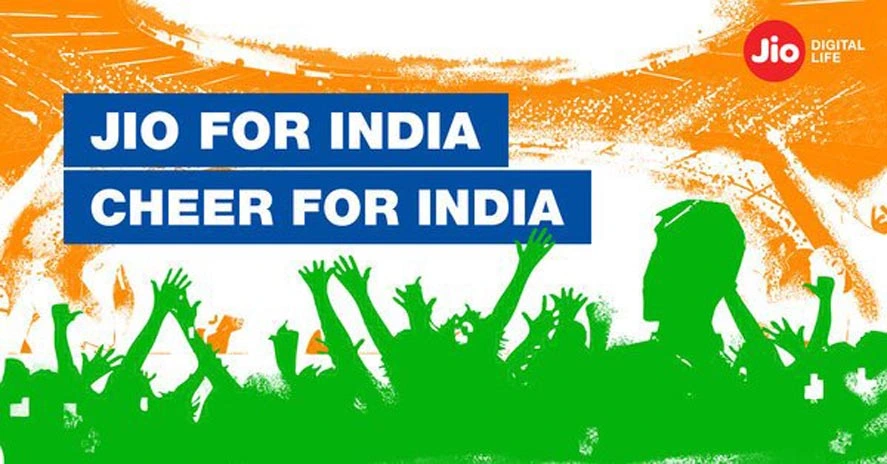
This was a successful marketing campaign ran at the time of the India vs Pakistan match. The campaign reached 90 lakh cricket fans. Jio spreaded this message through notifications and ads. As an Indian brand, Jio never misses the opportunity of marketing through events.
3) Cricket Play Along Campaign in IPL
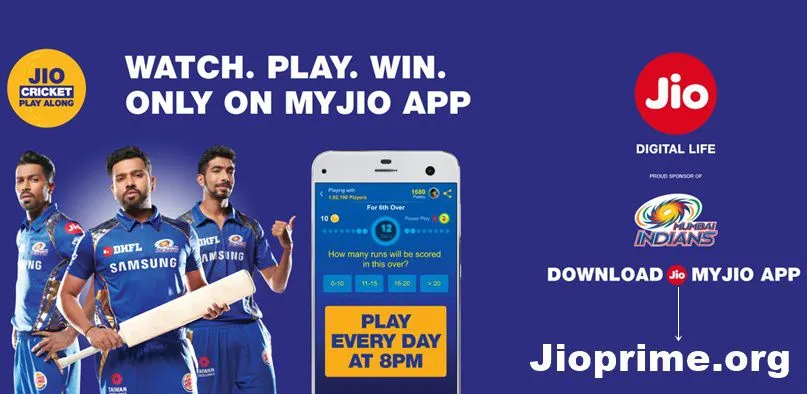
We Indians love cricket. Jio used cricket to develop a winning marketing strategy. In sept. 2020, Jio launched a campaign called “cricket play along”. In this campaign, you need to predict the next ball’s results. If you predicted correctly, you will win some points.
It was a fun game. Thousands of people played it. Jio was also awarded by GLOMO awards in 2019 for this great marketing work.
Here we end this case study about Jio Marketing strategy. We have shared all marketing strategies used by Jio. Jio is a dominant leader in the market. Now they preparing for a mass level 5G launch. In the future, you will see much better marketing strategies of Jio. Thanks for reading.
About Quibus Trainings
Quibus Trainings Institute offers the best Digital Marketing course in Jaipur with 100% placement assistance. The founder of Quibus trainings and the course instructor, Mr. Paramveer Singh has an experience of more than 10 years in this field. He has taught 3000+ students and helped them build a successful careers in Digital Marketing.
The modules covered in the Digital marketing mastery course are SEO, PPC, Google Analytics, Social Media Marketing, Email Marketing, and Blogging. In addition, you will also receive 10+ certificates from Facebook, Google, Hubspot, etc. So, join our 4-month Digital marketing mastery course and become job ready.
Parmveer Singh Sandhu

Speak To A Counsellor
Kindly fill your details to get a call from our counsellor. Ask your questions or Schedule a personal meeting.
- Skip to main content
- Skip to search
- Skip to footer
Products and Services

Cisco Provider Connectivity Assurance
Gain end-to-end visibility and insights like never before..
Create exceptional digital experiences built on deep network observability and critical network monitoring.
Service assurance that's proactive and precise—a win-win
Drive additional sales revenue.
See more revenue from portal fees and capacity purchases when you give customers deeper visibility and transparency with Cisco Provider Connectivity Assurance.
Boost efficiency and revenue with Cisco Provider Connectivity Assurance (formerly Accedian Skylight), delivering service assurance that continuously monitors and optimizes digital experiences.
Simplified operations and troubleshooting
Gain a single view of granular performance metrics and third-party data to accelerate MTTR.
Continuous optimization of digital experiences
Find transient issues with precise synthetic network and service testing.

Differentiated services, next-level innovation
Premium, SLA-backed services and end-customer portals are just a click away.
Predictive analytics powered by AI
Be proactive, not reactive. Put the power of your multivendor infrastructure to work for a trouble-free network.
See what sets Cisco Provider Connectivity Assurance apart
Granular, real-time visibility.
Perform end-to-end and full mesh testing with microsecond precision and make hidden microbursts a thing of the past.
Reliability meets flexibility
Enjoy 99.997% uptime and take full control over network performance for greater reliability.
Optimize your infrastructure
Automatically correlate sensor metrics with third-party sources of performance data to improve ROI and create better digital experiences.
Deliver exceptional services
Ready-made customer portals differentiate services, boost revenue, and enhance satisfaction.
Assuring high-performance critical networks
See how Cisco Provider Connectivity Assurance enables efficient troubleshooting and SLA assurance—all while lowering operational costs.
Cisco Provider Connectivity Assurance use cases
Solve the challenges of fragmented multidomain tools and poor visibility on service quality. Discover how Provider Connectivity Assurance can help you simplify operations.
Real-time SLA visibility
Monitor and police SLAs for accountability, while proactively addressing performance issues.
Critical network monitoring
Improve operational efficiency with proactive assurance and microsecond visibility for faster issue resolution and better experiences.
B2B service differentiation
Create new revenue opportunities to upsell and differentiate your services with multitenant end-customer portals for real-time service-level agreement (SLA) visibility and alerting.
Automated assurance
Detect issues early when you automate assurance for the entire service lifecycle with real-time service visibility and predictive analytics.
Multilayer assurance
Get a single view of performance across multiple network layers, like segment routing and routed optical networking, to reduce tools and drive down MTTR.
Mobile backhaul and edge monitoring
Optimize digital experiences with real-time service visibility, while assuring your end-to-end 5G transport.
Get high-precision service assurance with Cisco Provider Connectivity Assurance
Ai-enabled predictive analytics.
Get an ML-assisted view of your entire network and gain powerful performance insights.
Assurance sensors
Network-wide service performance visibility. Deployable anywhere, at scale.
See why your peers trust Cisco Provider Connectivity Assurance
"we can look at network performance at any level.".
With Cisco Provider Connectivity Assurance, Bouygues Telecom now has a complete "telescopic and microscopic" view of network and service performance in a single tool.
André Ethier, Network Quality Engineer
Bouygues Telecom
"The solution is key in evolving our end-to-end network visibility."
This is extremely powerful in terms of customer experience. It helps to avoid tickets, as customers can see for themselves what happened with their service. This reduces tension and increases customer satisfaction.
Bart Janssens, Senior Specialist, Packet Architecture
Take preventative measures against network degradation.
"With service-centric assurance and granular visibility we can prevent degradations, automate actions for improvements, and better communicate with our customers."
Mahesh Anjan, Senior Product Technology Executive
Better together
Cisco crosswork network automation.
Drive network efficiency and enhance experiences.
Cisco Optics
Plug innovation into your network.
Boost efficiency and service quality
Cisco Provider Connectivity Assurance helps you improve service quality, lower costs, and deliver outstanding user experiences with a single view of service performance across the entire network

Reliance Jio’s Marketing Strategy and Case Study
Reliance Jio’s Marketing Strategy and Case Study – Jio aims at creating an entire digital ecosystem, offering broadband services, applications, smart devices, and mobile telephony facilities. Its offerings range from a wide library of recorded and live music programs, television shows, sports programs to movies. Jio Money, Jio Play and Jio Join app are among the most popular Jio applications.
Jio customer acquisition Plan Jio has appointed 50 customer acquisition and relationship managers who are hiring teams that will target to sign up 1 million users each in the first two months, said the person cited earlier. The company wants to get to 100 million users in 100 days.
Table of Contents
What’s reliance’s strategy behind this?
Mukesh Ambani finally acknowledges the universal truth – globally consumers pay for either calls and texts, or data – they don’t pay for both. This universal truth helps establish a new industry norm in reliance’s policies. Mukesh also said Reliance is going to charge 1/10 th of the standard in telecommunications charges.
What’s absolutely free?
With every Reliance Jio sim, regardless of the package you buy, even the cheapest one, you get absolutely free:
- Unlimited voice calls, to any number at all, local or STD
- Absolutely no such thing as “roaming” or charges of roaming – same prices throughout India
- Reliance Jio apps which will also free surfing of movies music and live TV free till December 2017
What else is extremely exciting about the plans?
If you opt for any plan above the base one, which is 150, so starting from the 500 rupees a month plans to more, you get:
- Unlimited texts, local or STD
- Unlimited high speed night time 4G usage
- Students get an additional 25% data usage if they register their sim card on a student ID
What’s the catch here?
There are obviously some catches and marked terms and conditions for everything that seems too good to be true. Here are few things you need to look out for:
- Essentially the starter 150 rupees a month pack is good, but not marvelously great. The real brilliant pricing starts from the 500 rupees a month plans.
- Reliance has a naughty network resulting in weak signals and call drops. Maybe that’s something to keep in mind before switching.
- All packs work for 28 days, not 31 days. So essentially, in the long run, you’d end up buying 13 packs a year and not 12. But that’s the norm with all other brands too.
- If you try to trick the system by tethering using a hack on your smartphone beyond your usage allowance of tethering, and if Reliance finds out, you could not only face legal action but also be banned from Reliance’s networks for life.
Mukesh Ambani’s Plan for JIO

The unit, Reliance Jio Infocomm Ltd., will issue 15 billion new shares at 10 rupees each to existing shareholders, the India-based company said in an exchange filing late Monday, without saying how it would spend the money. The industrial group owns more than 99 percent of the affiliate, according to its 2015 annual report.
Ambani, India’s richest person, is plowing more money into the wireless business as he prepares to shake up the country’s crowded, indebted industry by introducing fourth-generation wireless services through Jio. The Reliance unit has been buying spectrum since 2010 under a plan to return this quarter to a market that now has more than 1 billion mobile subscribers.
Jio’s capital expenditure now is “above 1 trillion rupees,” not accounting for the payment for the spectrum pacts, Thakur said, adding Reliance Communications hasn’t been paid anything for the spectrum agreements yet. Jio could evaluate options for sharing and trading airwaves with smaller carriers, Joint Chief Financial Officer Srikanth Venkatachari told reporters.
Reliance Jio is expected to get 80 million subscribers by March 2018, with more than half churning out of the top three operators, according to a Jan. 11 report by CLSA, “escalating the competition and impacting realisations.” Billionaire Sunil Mittal, chairman of India’s largest carrier Bharti, had said Jio’s entry will shake up the sector and trigger consolidation.
jIO Competitive pricing Jio 4G data services are not intended to lure only the high-end customers but also focus on the low to mid range segments. These sections of the market are being targeted by offering all services at reasonable prices.
LYF smart phones are priced between Rs. 4,000 to Rs 19,000 which provides maximum off take, therefore helping Jio derive high returns.
Single-device country The prices of LYF handsets have been determined considering that India is soon becoming a country where smart phone users prefer to perform most tasks on their cellular devices. Recently, Reliance Jio launched LYF WIND 1 which is one of the best mobile under 10000 under the LYF brand. From keeping a track of the latest news, watching movies, playing games, to reading books, the smart phone is becoming an all-encompassing device.
This very reason is the motivation behind Reliance Jio’s attempt at creating affordable handsets and services that meet high-quality standards.
Jio services Jio aims at creating an entire digital ecosystem, offering broadband services, applications, smart devices, and mobile telephony facilities. It’s offerings range from a wide library of recorded and live music programs, television shows, sports programs to movies.
Jio Money and Jio Play are among the most popular Jio applications.
Jio Play The Jio Play content streaming service allows users to conveniently catch up on their favorite TV shows. It allows uninterrupted entertainment without buffering videos and also provides a seven-day back-up of shows.
E-health services Reliance Jio has recently entered into an association with a public health center in Punjab. The company’s e-health services are currently being tested there. The goal is to create a platform wherein video calls can enable both medical examination and diagnosis of patients.
Reliance’s stake Titled as the biggest bet made in the telecom industry, the parent company – Reliance Industries Limited (RIL) has invested more than $ 22 billion in Jio. This investment helps Jio provide high-quality services due to its extensive 4G spectrum, advanced technology, and the widest accession of optical fiber network in the country.
A source stated that prior to the commercial launch, everything will be checked, and re-checked in order to eliminate all glitches and create a seamless experience.
Infrastructural support

The fifth-largest smart phone provider in India (within the first quarter after its launch), according to data by Counterpoint Research, Reliance Jio’s commercial launch is much awaited.

For Queries, Feedback & Assistance
Ciim online support, 9:00am - 7:00pm, for admissions & career counselling, call back request.

- Our Trainers
- Student Reviews
- Online Payment
- Online Registration
- Get A Free Class
- Placements Gallery
- Life at CIIM
- Apply for Franchise
- Hire From Us
- Become Trainer
- Scholarships
Refer & Earn
- For Students
- For Teachers
- For Individual
Digital Marketing Courses
- Master in Digital Marketing
- Diploma in Digital Marketing
- Advanced Digital Marketing Certification
- Digital Marketing Foundation Course
- Online Advanced Digital Marketing Certification
- All Courses
Short Courses
- Paid Ads (Google, Facebook) Specialist
- Search Engine Optimisation (SEO) Specialist
- Social Media Marketing Specialist
- Ecommerce Marketing Specialist
- YouTube Marketing Specialist
- Affiliate Marketing Specialist
- Email Marketing Specialist
- Content Writing Specialist
- Google Adsense Specialist
- Amazon Marketing Course
Digital Marketing Courses Across India
- Himachal Pradesh
- Kurukshetra
- Yamunanagar
- Dharamshala
- Bahadurgarh
Digital Marketing Courses Across World
- Umm Al Quwain
- Ras Al Khaimah
Corporate Training Courses
- Corporate Training
- Educational Institutions
Quick Links
- Privacy Policy
- Terms & Conditions
- Get Direction

Apply Before
to get Scholarship of up to

Airtel VS Jio Complete case study: Detailed Analysis & Review
- Post author: StockPe
- Post published: April 17, 2023
- Post category: Uncategorized
- Post comments: 0 Comments
Jio and Airtel have engaged in strong competition for a higher market share in the Indian telecom sector. This case study examines the competition between Jio and Airtel in detail, examining their market strategies, product offerings, pricing structures, customer retention rates, and market shares.
One of India’s leading telecommunications providers, Airtel, has been in the business for more than 20 years and has built a solid reputation. On the other side, Jio, a relatively new competitor in the market, has revolutionised the sector with its inexpensive data plans and cutting-edge products. In order to gain insight into how their competitors are promoting industry growth, the study will examine the various facets of their competition, including their strengths and shortcomings.
Airtel Case Study:
Sunil Bharti Mittal started Airtel, formally known as Bharti Airtel Limited, an international telecommunications business in India, in 1995. Over 418 million people receive voice and data services from Airtel, which operates in 18 nations throughout Asia and Africa. With a market share of about 29.39% in India, Airtel is the second-largest telecom provider.

Strengths and Advantages:
- Broad Network Coverage: Airtel offers 4G and 5G services and has a large network coverage throughout India.
- Customer-centric Approach: Airtel has a strong focus on serving its customers and provides a range of services that are esigned with their needs in mind.
- Diversified Business: Broadband, DTH, and enterprise services are now part of Airtel’s business portfolio.
- Strong Brand Equity: In the Indian telecom sector, Airtel is a well-known and dependable brand.
Weakness and Disadvantages:
- Debt Burden: Airtel’s heavy debt load restricts its ability to invest in infrastructure and technologies.
- Limited Spectrum Availability: Airtel’s ability to extend network coverage and provide high-speed internet services is constrained by the limited spectrum that is available to it.
- High Level of Competition: Jio, which provides inexpensive data services, poses the greatest threat to Airtel.
Overall, with a varied business portfolio, extensive network coverage, and a high brand equity, Airtel is a significant player in the Indian telecom sector. However, it has difficulties like fierce rivalry, a lack of spectrum availability, and a heavy debt load. The measures adopted by Airtel to increase network coverage, diversify its line of business, save expenses, and interact with customers would aid the company in maintaining its position in the market and effectively competing with rivals.
Jio Case Study:
Jio, also referred to as Reliance, In 2010, Mukesh Ambani, the head of Reliance Industries Limited, created the Indian telecom business Jio Infocomm Limited. In September 2016, Jio launched its commercial operations and started providing 4G LTE mobile, broadband, and digital services.
Here is a synopsis of Jio’s past:
- In 2010, Reliance Industries Limited bought a 95% share in Infotel Broadband Services Limited, which had won the government of India’s auction for a licence to use 4G spectrum across the country.
- With a focus on 4G services, Mukesh Ambani announced plans to invest INR 1.5 lakh crore (about $20 billion) in the telecom industry in 2013.
- Jio conducted a preliminary launch of its services in December 2015 for Reliance workers.
- Jio officially launched its services in September 2016 and offered six months of free voice and broadband services to attract subscribers.
- Jio stated in December 2016 that it had added 50 million users in just 83 days, breaking the previous record for the fastest subscriber ramp-up by a telecom company.
- Jio claimed in March 2017 that it had reached 100 million customers in just 170 days, breaking another another record.
- Jio released its 4G VoLTE feature phone, the JioPhone, in July 2017 with a focus on the low-income and rural markets.
- Jio’s revolutionary pricing model, which included initially providing free voice and data services and subsequently introducing affordable data plans, has allowed it to quickly build up a sizable subscriber base.
- large Network Coverage: Jio offers its consumers 4G and 5G services and has a large network footprint throughout India.
- High Investment in Technology and Infrastructure: Jio has made significant investments in technology and infrastructure, such as the construction of a pan-Indian fibre optic network, which have enabled it to provide high-speed data services and enhance the quality of its network.
- Jio introduced its broadband services, Jio Fibre, in September 2018, providing consumers with high-speed internet, telephony, and TV services.
- Dependence on Data Services: Due to Jio’s emphasis on data services, its reliance on data revenues may be negatively impacted by changes to regulations or competition from other businesses.
- Limited Diversification: Jio’s revenue is primarily derived from the telecom industry, making it less diversified than other market participants.
- Customer complaints about Jio’s network, call quality, and customer service have been received. These issues may have an impact on customer loyalty in the future.
Through a series of investments from businesses like Facebook, Google, and others in 2020, Jio raised INR 1.52 lakh crore (US$20 billion), which aided in debt reduction and strengthened its market position.
With a market share of 36.32% as of 2022 and more than 447 million members, Jio is India’s largest telecom provider.
With its innovative pricing policies, emphasis on digital services, and investments in infrastructure and technology, Jio has completely changed the Indian telecom sector and emerged as a force to be reckoned with.
With its innovative pricing model, robust network coverage, and emphasis on digital services, Jio is a formidable competitor in the Indian telecom sector. However, it has difficulties such reliance on data services, a lack of diversification, and client concerns about network quality and customer service. Jio will be able to sustain its position in the market and effectively compete with other competitors thanks to its strategy to increase network coverage, broaden its business portfolio, engage with customers, and invest in infrastructure and technology.
Airtel vs Jio:
Among the top telecom firms in India are Airtel and Jio. Both businesses are well-established in India and provide a variety of goods and services to their clients. We will thoroughly examine and analyse the two businesses in this case study.
- Background and History: Sunil Bharti Mittal started Airtel, also known as Bharti Airtel, in 1995. It is one of the biggest telecom businesses in the world and has its headquarters in New Delhi, India. Broadband, digital TV, mobile and fixed-line telephony are just a few of the goods and services that Airtel provides.
Jio: Mukesh Ambani founded Jio, also known as Reliance Jio, in 2016. It is a division of Reliance Industries with its headquarters in Mumbai, India. Jio is a supplier of 4G LTE networks and provides a variety of goods and services, including as broadband, digital TV, and mobile and fixed-line phone service.
- Network Coverage: Airtel Airtel provides 2G, 3G, and 4G services and has a significant network presence in India. In India, Airtel offers extensive network coverage that includes both urban and rural areas.
Jio: Jio is an Indian supplier of 4G LTE networks and 4G services. Jio has made significant investments in its network infrastructure, and the country’s coverage of its services is fast growing.
- Products and Services: Airtel: Airtel provides a variety of goods and services, such as Internet, digital TV, and mobile and fixed-line telephone. Additionally, Airtel has introduced Airtel Payments Bank, which enables users to register bank accounts and conduct transactions using mobile devices.
Jio: Jio provides a variety of goods and services, such as broadband, digital TV, and mobile and fixed-line phone service. Jio has also unveiled JioMoney, a mobile-based digital wallet that enables users to conduct transactions.
- Pricing: Airtel’s pricing is reasonable and fluctuates according to the goods and services provided. Customers of Airtel can choose from a variety of plans and packages.
Jio: Jio is renowned for its innovative and fiercely competitive pricing. To increase its market share, Jio has a history of providing services for nothing or at steep discounts.
- Advertising and marketing: Airtel: Airtel has a reputation for running original and imaginative marketing campaigns. In order to promote its brand, Airtel has also teamed up with a number of athletes and celebrities.
Jio: Jio has a reputation for aggressive marketing and publicity activities. Jio has also teamed up with a number of athletes and celebrities to promote its brand.
- Customer assistance is provided by Airtel through a variety of channels, including phone, email, and social media. Airtel has a strong customer care presence in India.
Jio: Jio has received criticism for at times being slow and unresponsive with its customer support.
- Financial Performance: Airtel: Over the years, Airtel has consistently recorded outstanding financial performance and revenue growth. The quarter ended June 30, 2021, had an Airtel net profit of Rs. 284.2 crore.
Jio: Since its launch, Jio has also revealed impressive financial results. Jio made a net profit of Rs. 3,651 crore for the quarter that ended on June 30, 2021.
- Market Share: Airtel: With a market share of over 28%, Airtel is one of the biggest telecom providers in India.
Jio: With a 36.32% market share in the Indian telecom sector as of January 2022, Jio was the biggest telecom provider in the nation. Since its 2016 inception, Jio has been steadily expanding and upending the Indian telecom industry with its inexpensive internet services and novel products. It has a sizable customer base and is a leading participant in the Indian telecom sector thanks to its robust network coverage and fast 4G and 5G services.
Two significant telecom industry companies in India, Jio and Airtel, each have unique strengths and disadvantages. Airtel is a well-known company with a strong brand, numerous sources of income, and an emphasis on premium services. Jio, a relatively new competitor, has, on the other hand, upended the market with its inexpensive data plans, robust network, and emphasis on digital services.
Jio has eclipsed Airtel in terms of market share and is now India’s biggest telecom provider. With a sizable client base, a variety of revenue sources, and a strong focus on premium services, Airtel is still a formidable competitor.
Jio and Airtel both have distinctive business plans for competing in the market. While Jio is concentrated on growing its network coverage, diversifying its business portfolio, engaging with customers, and investing in technology and infrastructure to provide high-speed data services, Airtel is concentrated on providing premium services and investing in infrastructure and technology to improve customer experience.
In conclusion, Jio and Airtel are two significant participants in the Indian telecom market, each with a unique set of strengths and weaknesses. However, both companies have developed competitive strategies that allow them to thrive in the industry. Customers have benefited from the competition between Jio and Airtel since lower rates, better services, and more inventive items have resulted from it.
You Might Also Like

How to Save Money from Salary?

Top 10 FMCG Stocks to Invest in 2023
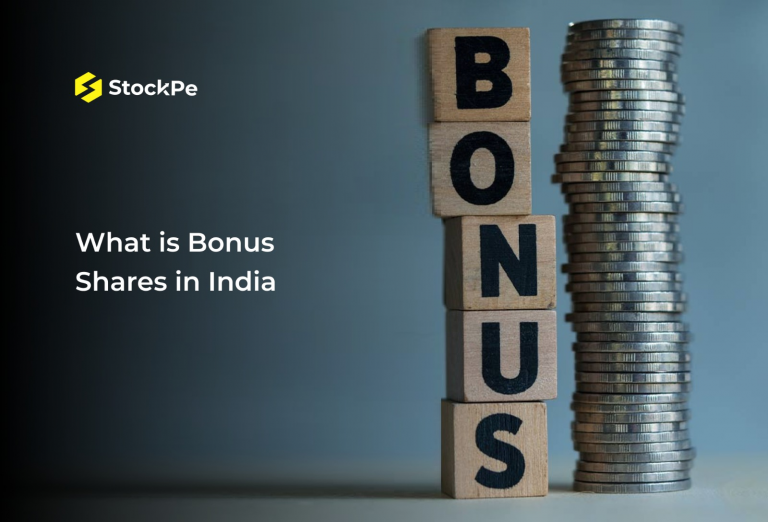
What is Bonus Shares in India – Most Bonus Giving Shares
Leave a reply cancel reply.
Save my name, email, and website in this browser for the next time I comment.

Looking to try stock market fantasy game?
Play on StockPe now to win big rewards with secured withdrawals.
- Law of torts – Complete Reading Material
- Weekly Competition – Week 4 – September 2019
- Weekly Competition – Week 1 October 2019
- Weekly Competition – Week 2 – October 2019
- Weekly Competition – Week 3 – October 2019
- Weekly Competition – Week 4 – October 2019
- Weekly Competition – Week 5 October 2019
- Weekly Competition – Week 1 – November 2019
- Weekly Competition – Week 2 – November 2019
- Weekly Competition – Week 3 – November 2019
- Weekly Competition – Week 4 – November 2019
- Weekly Competition – Week 1 – December 2019
- Sign in / Join

- Featured Student Assignments (LawSikho)
- Predatory pricing
All about predatory pricing in light of the Reliance Jio case

This article has been written by Manoj Purohit pursuing Diploma in Advanced Contract Drafting, Negotiation and Dispute Resolution and has been edited by Oishika Banerji (Team Lawsikho ).
This article has been published by Sneha Mahawar .
Table of Contents
Introduction
Competition means that a seller works hard in order to buy a buyer’s patronage and to sustain in the market with other similar sellers and also maximise his profits. A buyer always tries to buy a product or hire a service at the lowest price available with decent quality but a seller always tries to sell his product at the most profitable price in order to maximise his profit. Sellers use various methods to achieve buyers’ patronage. One of such way is the pricing of goods. Sellers price the goods at such a low price that other competitors shall not be able to compete with the price and will be forced to exit from the market. This is called “predatory pricing”. Thus “predatory price” is understood as the selling of products or amenities below the floor price as set by regulation with the intention of reducing the competition or eliminating the competitors out of the market. Competition is considered as one of the most efficient ways to make sure that the end-users are exposed to a wide range of products and amenities at the basic price which is available. Enterprises will have the urge to innovate, sell by means of cost-effective goods thereby meeting consumers’ demand and achieving consumer satisfaction. Competition thus increases the quality of goods and services and the efficiency of the goods as well as services. But in order to achieve this market conditions must be competitive and governments all around the world are struggling hard in order to remove deformity in the market through appropriate regulations and to promote competition. One such regulation is Section 4(b) of the Competition Act, 2002 , which speaks about predatory pricing. In this article, we are going to discuss the concept of predatory pricing in detail.

Competition kills competition
In the existing world, each and every person tries to overthrow their competitors for survival in the market and for expansion. In this process, every enterprise shall make sure it stands unique by using smart techniques to do so. Sometimes they even tend to eliminate competitors. This can be highlighted as COMPETITION KILLS COMPETITION. There are various ways to do so and one of such ways is predatory pricing which helps to kill the competition in the market.
Abuse of dominant position
A dominant position means a position that is generally above others. It is always appreciable to be in the dominant position and not considered disagreeable. But abusing such a dominant position or superiority is considered as a wrongful act. The Competition Act, 2002 defines “dominant position” as a place in which an enterprise enjoys its strength in the market, which enables the firms to work without any dependency of any competition that may be persuaded in the market or which shall affect other enterprises or end users in marker and has the market in its favour under all circumstances. The Competition Act, 2002 prevents firms from abusing their dominant position. Predatory pricing is one of the ways of abusing a dominant position.
Conditions precedent to bringing a case within the ambit of predatory pricing
The conditions precedent to predatory pricing are:
- Vending goods or facilitating services at a price that is below the floor price mentioned.
- This is done to make sure other enterprises are thrown out of the market and the competition is reduced.
The “ Competition Commission of India ” has been authorised to decide whether any enterprise or firms abuses the “dominant position” or not in the pertinent market by “predatory pricing” of goods and also to decide if it is in the “dominant position” or not. It may be noted that “predatory pricing” should not be frowned upon unless the firm abuses it while in the dominant position.
Phases of predatory pricing
There are two main phases that exist in the clock of predatory pricing.
- The first is the sacrifice phase
In this phase the firm incurs losses. It tries to sell the product at the lowest price. It sells the product with good quality and with the lowest price. It tries to keep the price so low that no firm has ever sold the product at such a low price. Here it sacrifices all the profits and the firm incurs huge amounts of loss. The firm considers it to be a marketing strategy and utilisation of capital for marketing just like advertisement expenses or marketing expenses.
- The second phase is the recovery phase
Once the firm makes sure that all the competitors are thrown out of the market it starts increasing the prices. It recovers all its losses or expenses that were incurred in the first phase. The firm makes sure that it has achieved monopoly in the market and that there are no powerful competitors left in the market before increasing the prices in the recovery phase.
Legality of predatory pricing
Predatory pricing is illegal but is very difficult to prove. Predatory pricing violates antitrust laws. The laws intend to make sure there is fair competition in the market. Just by lowering the price it doesn’t prove to be predatory pricing. There are various other reasons for which the prices of the goods can be lowered. In order to prove that lowering of the price is violating Section 4 of the Competition Act, 2002, it has to be proved in a court of law that the lowering of the price was done in order to cause an “appreciable adverse effect” on the competition of the market. The burden of proof lies on the opposite party and should bring evidence that the competition is causing appreciable effects and is increasing monopoly. The firm should be proven guilty that it just did not intend to compete but intended to eliminate the competition.
Effects of predatory pricing on the market
Competition increases the quality of goods and services and the efficiency of the goods as well as services. But in order to achieve this, market conditions must be competitive and governments all around the world are struggling hard in order to remove deformity in the market through appropriate regulations and to promote competition. In case they fail to do so then the predatory pricing shall have the following effects on the market:
- There shall be no competition in the market. When the person with the dominant position eliminates the competition by pricing goods below floor price other competitors shall be forced to exit because of losses.
- Monopoly shall prevail. When all the competitors are exited from the market monopoly shall increase and the person with the dominant position shall be the only seller.
- Enterprises shall neglect technological development. Such enterprises shall not care what the consumers want and will not strive for any sort of development.
- There shall be no efforts of cost reduction by the enterprises in the market since he will be the only seller in the market.
- There shall be no innovation in the market as the goods shall be sold at their price without any efforts to buy the consumers’ patronage.
- High prices shall be charged by the enterprises once all the competitors are eliminated from the market and there is no competition.

Predatory pricing of Reliance Jio
Reliance Jio entered the Telecom sector on September 5 th, 2016. The regulation of telecommunications in India is carried out by the Telecom Regulatory Authority of India (TRAI). It, along with the Competition Commission of India, ensures that there shall be fair competition in the telecommunication sector and there is appreciable adverse effect on competition in the telecommunication sector.
Bharti Airtel Ltd. had presented a case against Reliance that the holding company i.e. Jio practised a strategy that was anti-competitive and had caused “appreciable adverse effect” on the competition of the market. This allegation was made as Reliance Jio had free services from September 5th, 2016 which amounted to predatory pricing. Airtel had also alleged that the free services that were rendered by Reliance Jio were amounting to the abuse of the dominant position of the Reliance group. It alleged that Reliance was indulging in “predatory pricing” with free services to eliminate competition in the telecom market.
Considerations of Reliance’s behaviour as predatory
- The data-centric works on 4G mobile handsets. It thus ends up with consumers paying more for Jio services for free voice calling.
- Initially, free service was for a trial period till December 30, 2016. But they kept on increasing the deadlines until they introduced the Jio Prime.
- This affected the competition of the market as the other service providers of telecom industries were not able to compete with the free services which were provided by Jio.
Defence taken by Reliance Jio
Jio presented its latest annual report of Airtel before the Competition Commission of India which stated that it did not differentiate any service which was provided by it in the telecom sector. Mere funding by the host company for the purpose of expansion by the new sector entry into the market can not be termed as predatory. Just because it had the funding from the company which had a dominant position in the market which was reliant it wouldn’t amount to Jio having a “dominant position” in the market as it was a new entrant into the telecom sector. Existing competitors had given sufficient choice for customers to shift from one service provider to another without any material cost of switching.
Decision by the Competition Commission of India
Competition Commission of India rejected all the allegations of Bharti Airtel, as it stated that “…in the absence of any dominant position enjoyed by Jio in the relevant market, the question of alleged abuse does not arise…”
The CCI stated that just by providing free services in the market does not amount to be anti-competitive in nature. For Reliance to be held guilty of “predatory pricing”, it must be in a dominant position as per Section 4 of the Competition Act 2002. Since Jio was a new entrant in the Telecom market it can not be said that Reliance Jio was in a “Dominant Position” and can not be held guilty of “predatory pricing”. Even though it had a negative effect on old operators and it did not have a suitable business model to sustain lower tariffs for a very long period of time the accused was not in the “Dominant Position” and cannot be held guilty.
Competition is the most essential thing in the market to protect the consumer interest. It helps consumers from not being exploited. As long as there is competition in the market sellers struggle hard for buyers’ patronage. They use innovative techniques and more options shall be available for the consumers. Techniques like predatory pricing would cause an appreciable adverse effect on the competition of the market. The essentials like “Abuse of Dominant Position” must be present in order to prove that the strategy used results in predatory pricing and shall contravene Section 4 of the Competition Act of 2002. Thus, predatory pricing is considered to be illegal and shall increase the monopoly of the market which leads to high concentration of competitors and there shall be homogeneity of products with a high dependency of consumers on a single enterprise which is not good for the market.
- https://www.investopedia.com/terms/p/predatory-pricing.asp
- https://rcic.in/uncategorized/predatory-pricing-and-its-legal-regime-in-india/
- https://www.business-standard.com/article/companies/cci-rejects-airtel-s-predatory-pricing-case-against-reliance-jio-117061000051_1.html
Students of Lawsikho courses regularly produce writing assignments and work on practical exercises as a part of their coursework and develop themselves in real-life practical skills.
LawSikho has created a telegram group for exchanging legal knowledge, referrals, and various opportunities. You can click on this link and join:
https://t.me/lawyerscommunity
Follow us on Instagram and subscribe to our YouTube channel for more amazing legal content.

RELATED ARTICLES MORE FROM AUTHOR
Structure of licencing contracts : all you need to know, impact of general data protection regulation (gdpr) on artificial intelligence, limitations of judicial review in india, leave a reply cancel reply.
Save my name, email, and website in this browser for the next time I comment.
3-Day Bootcamp on How to get a law firm job

Register now
Thank you for registering with us, you made the right choice.
Congratulations! You have successfully registered for the webinar. See you there.
- Technology News
- Airtel and Reliance Jio users, here's the '4-day' trick to avoid mobile tariff hike
Airtel and Reliance Jio users, here's the '4-day' trick to avoid mobile tariff hike
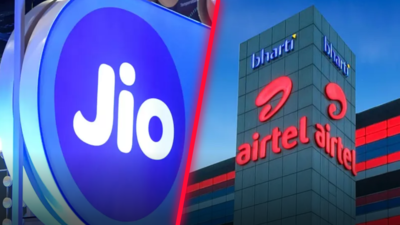
Reliance Jio: All the new prepaid plans and benefits
| Existing Plan Price (Rs) | Benefits (Unlimited voice & SMS plans) | Validity (days) | New Plan Price (Rs) |
| Monthly | |||
| 155 | 2 GB | 28 | 189 |
| 209 | 1 GB/day | 28 | 249 |
| 239 | 1.5 GB/day | 28 | 299 |
| 299 | 2 GB/day | 28 | 349 |
| 349 | 2.5 GB/day | 28 | 399 |
| 399 | 3 GB/day | 28 | 449 |
| 2-month plans | |||
| 479 | 1.5 GB/day | 56 | 579 |
| 533 | 2 GB/day | 56 | 629 |
| 3-month plans | |||
| 395 | 6 GB | 84 | 479 |
| 666 | 1.5 GB/day | 84 | 799 |
| 719 | 2 GB/day | 84 | 859 |
| 999 | 3 GB/day | 84 | 1199 |
| Annual | |||
| 1559 | 24 GB | 336 | 1899 |
| 2999 | 2.5 GB/day | 365 | 3599 |
| Data add-on | |||
| 15 | 1 GB | base plan | 19 |
| 25 | 2 GB | base plan | 29 |
| 61 | 6 GB | base plan | 69 |
Airtel: All the new prepaid plans and benefits
| Type | MRP | Validity (Days) | Benefit | Revised MRP |
| Unlimited | 179 | 28 | 2GB data, UL Calling, 100 SMS/day | 199 |
| Unlimited | 455 | 84 | 6GB data, UL Calling, 100 SMS/day | 509 |
| Voice Plans | 1799 | 365 | 24GB data, UL Calling, 100 SMS/day | 1999 |
| Voice Plans | 265 | 28 | 1GB/day, UL Calling, 100 SMS/day | 299 |
| Voice Plans | 299 | 28 | 1.5GB/day, UL Calling, 100 SMS/day | 349 |
| Voice Plans | 359 | 28 | 2.5GB/day, UL Calling, 100 SMS/day | 409 |
| Voice Plans | 399 | 28 | 3GB/day, UL Calling, 100 SMS/day | 449 |
| Daily Data Plans | 479 | 56 | 1.5GB/day, UL Calling, 100 SMS/day | 579 |
| Daily Data Plans | 549 | 56 | 2GB/day, UL Calling, 100 SMS/day | 649 |
| Daily Data Plans | 719 | 84 | 1.5GB/day, UL Calling, 100 SMS/day | 859 |
| Daily Data Plans | 839 | 84 | 2GB/day, UL Calling, 100 SMS/day | 979 |
| Daily Data Plans | 2999 | 365 | 2GB/day, UL Calling, 100 SMS/day | 3599 |
| Data Add-Ons | 19 | 1 day | 1 GB | 22 |
| Data Add-Ons | 29 | 1 day | 2 GB | 33 |
| Data Add-Ons | 65 | Plan validity | 4 GB | 77 |

Consolidation, Profitability Challenges Face India Streaming Sector, Says Ormax Chief: ‘Indians Are Not Used to Paying for Content’ (EXCLUSIVE)
By Naman Ramachandran
Naman Ramachandran
- Karlovy Vary Selection ‘Second Chance’ Lands World Sales Deal With Diversion (EXCLUSIVE) 17 hours ago
- Ben Hardy Talks ‘Unicorns’ Role, Career Path: ‘Acting Is Very Close to Anthropology’ 17 hours ago
- Malayalam Cinema Shines as Bollywood Recalibrates in 2024, Says Producer Siddharth Roy Kapur in Indian Industry Analysis (EXCLUSIVE) 19 hours ago

Shailesh Kapoor, head of Indian media consulting firm Ormax , says that profitability challenges and consolidation are trends to look out for in India ‘s complex streaming market.
Kapoor notes that streaming penetration remains limited, with paid content reaching only 10-14% of the 1.4 billion population. “The general belief is that this number will go up, leading to scale and profitability,” he explains, while cautioning about slowed growth since the pandemic.
Related Stories
Summer movie season testing 3d cinema’s recoverability, variety's showrunners sitdown: 'the boys' boss eric kripke on writing to the actors' strengths and not wanting to 'make edgelord material for incels', popular on variety.
On industry consolidation, Kapoor observes: “The whole merger and acquisition thing in India is not so streaming-specific. It’s probably more being driven by the overall landscape, including television.” He cites the failed Sony-Zee merger discussions as primarily motivated by their television businesses. Television remains the single largest component of India’s media and entertainment sector, with a valuation of $8.3 billion in 2023, according to the recent FICCI-EY industry report.
Kapoor points out a paradox in the market: “You feel that the market is getting more consolidated around three, four major players, yet at the same time, there is a long tail of regional players which are equally strong,” Kapoor said.
The exec highlights the upcoming Reliance-Disney deal as a potential industry template. “What happens with Reliance and Disney over the next six months will really be a good case study,” he predicts.
Kapoor also emphasizes the importance of theatrical films on streaming platforms, with both Netflix and Amazon benefiting from their strong theatrical film libraries. “The Indian market really relies on… the importance of theatrical films on OTT [streaming], because it’s a huge boost to subscriptions and to the preference for using certain apps over the others,” Kapoor says. He notes that for many Indian audiences, especially in the South, web series are still a nascent format, and theatrical releases remain a major draw.
Sports content offers advertising revenue potential but faces high rights costs, Kapoor said. Disney+ Hotstar, despite losing IPL cricket digital rights , remains a significant player, Kapoor added. “Last year, one of the things Jio Cinema changed forever is that they made sports free… by putting IPL in front of the paywall.” This move has altered the monetization strategy for sports content on streaming platforms, Kapoor said.
Looking ahead, Kapoor identifies Netflix, Amazon and JioCinema as the most promising players in the Indian streaming market. “Netflix is doing amazingly well in the last two years,” Kapoor states. After a challenging initial period in India, the platform has seen significant growth, with subscribers reportedly increasing from 7-8 million to over 11 million in two years, the executive said. Kapoor attributes this success to the introduction of a more affordable mobile plan and improved content quality. He suggests keeping an eye on JioCinema’s strategy in the coming months, noting its recent launch of disruptive pricing at INR29 (35 cents) per month.
The analyst concludes by emphasizing the need for quality content to accompany competitive pricing, stating, “Low pricing is not a guarantee in itself if the content quality doesn’t match up.”
More from Variety
Netflix to debut 14 new video games, including ‘emily in paris,’ ‘dragon prince: xadia’ and mobile version of ‘lord of the rings’ title ‘tales of the shire’, tony ratings have a long gap to clear, despite efforts to mimic larger shows, netflix unveils expanded albuquerque studios facilities spanning more than 100 acres in the new mexico desert, linda fairstein and netflix settle suit over ava duvernay’s central park five series, live music blues: are black keys, jennifer lopez just the beginning, netflix’s ‘arcane’ ending with season 2, but it’s the ‘first of many stories’ to tell in ‘league of legends’ world, more from our brands, martin mull, comedian and actor of ‘clue’ and ‘arrested development,’ dead at 80, yolanda hadid’s former malibu mansion just hit the market for $35 million, macklin celebrini chosen first by san jose sharks in 2024 nhl draft, the best loofahs and body scrubbers, according to dermatologists, the chi season 6 finale marks three big cast exits (and two major deaths) — hear from one of the recently departed, verify it's you, please log in.
Sonia’s AI chatbot steps in for therapists

Can chatbots replace human therapists? Some startups — and patients — claim that they can. But it’s not exactly settled science.
One study found that 80% of people who’ve used OpenAI’s ChatGPT for mental health advice consider it a good alternative to regular therapy, while a separate report found that chatbots can be effective in reducing certain symptoms related to depression and anxiety. On the other hand, it’s well-established that the relationship between therapist and client — the human connection, in other words — is among the best predictors of success in mental health treatment.
Three entrepreneurs — Dustin Klebe, Lukas Wolf and Chris Aeberli — are in the pro-chatbot therapy camp. Their startup, Sonia , offers an “AI therapist” that users can talk to or text with via an iOS app about a range of topics.
“To some extent, building an AI therapist is like developing a drug, in the sense that we are building a new technology as opposed to repackaging an existing one,” Aeberli, Sonia’s CEO, told TechCrunch in an interview.
The three met in 2018 while studying computer science at ETH Zürich and moved to the U.S. together to pursue graduate studies at MIT. Shortly after graduating, they reunited to launch a startup that could encapsulate their shared passion for scalable tech.
That startup became Sonia.
Sonia leverages a number of generative AI models to analyze what users say during “therapy sessions” in the app and respond to them. Applying techniques from cognitive behavioral therapy, the app, which charges users $20 per month or $200 per year, gives “homework” aimed at driving home insights from conversations and visualizations designed to help identify top stressors.

Aeberli claims that Sonia, which hasn’t received FDA approval, can tackle issues ranging from depression, stress, and anxiety to relationship problems and poor sleep. For more serious scenarios, like people contemplating violence or suicide, Sonia has “additional algorithms and models” to detect “emergency situations” and direct users to national hotlines, Aeberli says.
Somewhat alarmingly, none of Sonia’s founders have backgrounds in psychology. But Aeberli says that the startup consults with psychologists, recently hired a cognitive psychology graduate, and is actively recruiting a full-time clinical psychologist.
“It is important to emphasize that we don’t consider human therapists, or any companies providing physical or virtual mental health care conducted by humans, as our competition,” Klebe said. “For every response that Sonia generates, there are about seven additional language model calls happening in the background to analyze the situation from several different therapeutic perspectives in order to adjust, optimize and personalize the therapeutical approach chosen by Sonia.”
What about privacy? Can users rest assured that their data isn’t being retained in a vulnerable cloud or used to train Sonia’s models without their knowledge?
Aeberli says Sonia is committed to storing only the “absolute minimum” amount of personal information to administer therapy: a user’s age and name. He didn’t address where, how, or for how long Sonia stores conversation data, however.

Sonia, which has around 8,000 users and $3.35 million in backing from investors, including Y Combinator, Moonfire, Rebel Fund and SBXi, is in talks with unnamed mental health organizations to provide Sonia as a resource through their online portals. The reviews for Sonia on the App Store are quite positive so far, with several users noting they find it easier to speak with the chatbot about their issues than a human therapist.
But is that a good thing?
Today’s chatbot tech is limited in the quality of advice it can give — and it might not pick up on subtler signs indicative of a problem, like an anorexic person asking how to lose weight. (Sonia wouldn’t even know the person’s weight.)
Chatbots’ responses are also colored with biases — often the Western biases reflected in their training data. As a result, they’re more likely to miss cultural and linguistic differences in the way a person expresses mental illnesses, particularly if English is that person’s second language. (Sonia only supports English.)
In the worst-case scenario, chatbots go off the rails. Last year , the National Eating Disorders Association came under fire for replacing humans with a chatbot, Tessa, that dispensed weight-loss tips that were triggering to people with eating disorders.
Klebe emphasized that Sonia isn’t trying to replace human therapists.

“We are building a solution for the millions of people who are struggling with their mental health but can’t (or don’t want to) access a human therapist,” Wolf said. “We aim to fill the gigantic gap between demand and supply.”
There’s certainly a gap — both in terms of the ratio of professionals to patients and the cost of treatments versus what most patients can afford. More than half of the U.S. doesn’t have adequate geographic access to mental care, according to a recent government report. And a recent survey found that 42% of U.S. adults with a mental health condition weren’t able to receive care because they couldn’t afford it.
A piece in Scientific American talks about therapy apps that cater to the “worried well,” or people who can afford therapy and app subscriptions, and not isolated individuals who might be most at risk but don’t know how to seek help. At $20 per month, Sonia isn’t exactly cheap — but Aeberli argues it’s cheaper than a typical therapy appointment.
“It’s a lot easier to start using Sonia than seeing a human therapist, which entails finding a therapist, being on the waitlist for four months, going there at a set time and paying $200,” he said. “Sonia has already seen more patients than a human therapist would see over the course of their entire career.”
I only hope that Sonia’s founders remain transparent about the issues that the app can and cannot address as they build it out.
More TechCrunch
Get the industry’s biggest tech news, techcrunch daily news.
Every weekday and Sunday, you can get the best of TechCrunch’s coverage.
Startups Weekly
Startups are the core of TechCrunch, so get our best coverage delivered weekly.
TechCrunch Fintech
The latest Fintech news and analysis, delivered every Tuesday.
TechCrunch Mobility
TechCrunch Mobility is your destination for transportation news and insight.
Amazon hires founders away from AI startup Adept
Adept, a startup developing AI-powered “agents” to complete various software-based tasks, has agreed to license its tech to Amazon and the startup’s co-founders and portions of its team have joined…

YC alum Fluently’s AI-powered English coach attracts $2M seed round
There are plenty of resources to learn English, but not so many for near-native speakers who still want to improve their fluency. That description applies to Stan Beliaev and Yurii…

NASA and Boeing deny Starliner crew is ‘stranded’: “We’re not in any rush to come home”
NASA and Boeing officials pushed back against recent reporting that the two astronauts brought to the ISS on Starliner are stranded on board. The companies said in a press conference…

Forget the debate, the Supreme Court just declared open season on regulators
As the country reels from a presidential debate that left no one looking good, the Supreme Court has swooped in with what could be one of the most consequential decisions…

Android’s upcoming ‘Collections’ feature will drive users back to their apps
As Google described during the I/O session, the new on-device surface would organize what’s most relevant to users, inviting them to jump back into their apps.

Kleiner Perkins announces $2 billion in fresh capital, showing that established firms can still raise large sums
Many VC firms are struggling to attract new capital from their own backers amid a tepid IPO environment. But established, brand-name firms are still able to raise large funds. On…

DEI? More like ‘common decency’ — and Silicon Valley is saying ‘no thanks’
Welcome to Startups Weekly — Haje‘s weekly recap of everything you can’t miss from the world of startups. Sign up here to get it in your inbox every Friday. I…

HubSpot says it’s investigating customer account hacks
The company “identified a security incident that involved bad actors targeting a limited number of HubSpot customers and attempting to gain unauthorized access to their accounts” on June 22.

Volkswagen’s Silicon Valley software hub is already stacked with Rivian talent
VW Group’s struggling software arm Cariad has hired at least 23 of the startup’s top employees over the past several months.

Featured Article
All VCs say they are founder friendly; Detroit’s Ludlow Ventures takes that to another level
VCs Jonathon Triest and Brett deMarrais see their ability to read people and create longstanding relationships with founders as the primary reason their Detroit-based venture firm, Ludlow Ventures, is celebrating its 15th year in business. It sounds silly, attributing their longevity to what’s sometimes called “Midwestern nice.” But is it…

The White House will host a conference for social media creators
President Joe Biden’s administration is doubling down on its interest in the creator economy. In August, the White House will host the first-ever White House Creator Economy Conference, which will…

Pitch Deck Teardown: MegaMod’s $1.9M seed deck
In an industry where creators are often tossed aside like yesterday’s lootboxes, MegaMod swoops in with a heroic promise to put them front and center.

Google Gemini: Everything you need to know about the new generative AI platform
Google’s trying to make waves with Gemini, its flagship suite of generative AI models, apps and services. So what’s Google Gemini, exactly? How can you use it? And how does…

Who won the presidential debate: X or Threads?
There were definite differences between how the two platforms managed last night, with some saying X felt more alive, and others asserting that Threads proved that X is no longer…

Following raft of consumer complaints, Shein and Temu face early EU scrutiny of DSA compliance
Ultra-low-cost e-commerce giants Shein and Temu have only recently been confirmed as subject to centralized enforcement of the strictest layer of the European Union’s digital services regulation, the Digital Services…

Cold shipping might be the next industry that batteries disrupt
Artyc has raised $14 million to date and has a product on the market, Medstow Micro, that helps ship temperature-sensitive specimens.

Elevate your 2025 fundraising strategy at Disrupt 2024
Get ready to unlock the secrets of successful fundraising in the upcoming year at Disrupt 2024. Our featured session, “How to Raise in 2025 if You’ve Taken a Flat, Down,…

Remote access giant TeamViewer says Russian spies hacked its corporate network
The remote access giant linked the cyberattack to government-backed hackers working for Russian intelligence, known as APT29.

Here are the hottest product announcements from Apple, Google, Microsoft and others so far in 2024
We’ve poked through the many product announcements made by the biggest tech companies and product trade shows of the year, so far, and compiled them into this list.

Feather raises €6M to go Pan-European with its insurance platform for expats
As a foreigner, navigating health insurance systems can often be difficult. German startup Feather thinks it has a solution and raised €6 million to help some of the 40-plus million…

Rohlik rolls up $170M to expand in European grocery delivery and sell its tech to others
The salad days of fresh grocery delivery startups are over, but those that have stayed the course, and built businesses that are seeing gains, are still here and hungry for…

Robotics investments are gaining speed after post-pandemic slowdown
The first six months of the year have seen $4.2 billion invested in robotics, putting this year well on track to beat 2023’s 12-month total of $6.8 billion.

Hebbia raises nearly $100M Series B for AI-powered document search led by Andreessen Horowitz
Hebbia, a startup using generative AI to search large documents and return answers, has raised a nearly $100 million Series B led by Andreessen Horowitz, according to three people with…

Agility’s humanoid robots are going to handle your Spanx
Digit’s first job will be moving totes around a Connecticut Spanx factory — which is most definitely not a euphemism.

Will AI get an A+ in edtech? MagicSchool raises $15M to find out
These days, when you hear about students and generative AI, chances are that you’re getting a taste of the debate over the adoption of tools like ChatGPT. Are they a…

Zuckerberg disses closed-source AI competitors as trying to ‘create God’
In the conversation, Zuckerberg said there needs to be a lot of different AIs that get created to reflect people’s different interests.

Andrew Ng plans to raise $120M for next AI Fund
AI big shot Andrew Ng’s AI Fund, a startup incubator that backs small teams of experts looking to solve key problems using AI, plans to raise upward of $120 million…

VW taps Rivian in $5B EV deal and the fight over Fisker’s assets
Welcome back to TechCrunch Mobility — your central hub for news and insights on the future of transportation. Sign up here for free — just click TechCrunch Mobility! Am I…

FCC rule would make carriers unlock all phones after 60 days
Specifically, according to the FCC, carriers would simply have to provide unlocking services 60 days after activation.

As battery startups fail, Sila snaps up $375M in new funding
Amid a fraught environment for battery startups, Sila has raised $375 million to finish construction of a U.S. factory that will scale its next-generation battery technology for customers like Mercedes-Benz…


IMAGES
VIDEO
COMMENTS
This strategy includes 5 key components to help a business acquire and retain customers creatively and cost-effectively. Acquisition - After the commercial rollout of Jio in September 2016, Jio offered free services to its customers for 3 months. This plan worked as the trump card for Jio to acquire customers.
1) Get Jio Sim Home Delivered For Free. Jio's innovative marketing strategy includes the free home delivery of SIM cards, a service unprecedented before its introduction. This approach resonates ...
Reliance Jio's SEO Strategies & Case Study. Everybody, today, knows of Jio. However, let's look closely into what you can find when you google Jio. Website Overview: With a blue, a darker blue, and white colour theme, Jio's website is one that is completely service-oriented and allows customers to get their work done. Jio has a website ...
December 20, 2021. NurPhoto/Getty Images. Summary. Jio Platforms' unique experiment of co-opetition with global tech giants combined with its local prowess allows it to address an enormous ...
Reliance Jio Infocomm Ltd (popularly known as Jio), is an Indian mobile network. operator launched commercially on September 5, 2016. Owned by Reliance Indus-. tries, the entry of Jio ...
In this case study, we will go through the marketing strategy of Reliance Industries, one of India's most successful companies which is ranked #96 on the list of Fortune 500 companies. In 1960, Dhirubhai Ambani formed Reliance Industries Limited in Mumbai, Maharashtra with a dream of making it the largest company in India.
Why Reliance Jio is the Market Leader in 5G. With the rise of 'Made in India' initiatives proposed by the Government of India, In December 2020, the chairman of Reliance Industries, Mukesh Ambani had revealed that his telecom company, Jio, would launch 5G networks in the second half of 2021. Jio is building the 5G infrastructure by using ...
In a short span of less than two years, Reliance Jio has become synonymous with disruption and game changing strategies. Its entry into the Indian Telecom Sector has changed the rules of the game in addition to disrupting the carefully planned strategies of the other players. This case study examines the business, marketing, and strategic moves of Reliance Jio using tools such as SWOT, Porter ...
The Reliance business model is run and owned by Mukesh Ambani. The Jio business model is specified that giving free services to the customers will benefit them with more money as compared to the current other networks as charge prices, Jio provides free voice calls to customers. Reliance Jio was founded in the year 2007 by Mukesh Ambani.
Published Nov 4, 2023. + Follow. Introduction. Reliance Jio is a telecommunications company in India that was founded in 2010. It is a subsidiary of Reliance Industries Limited, which is one of ...
1) Social Media Marketing Strategy of Jio. Jio follows a simple yet powerful social media marketing strategy. They create engaging posts which attract more eyeballs. The majority of their posts are promotional on all social media platforms. In our opinion, Jio needs to work more on its social media strategy.
Reliance Jio, a subsidiary of Reliance Industries Limited (RIL), is a telecommunications company that revolutionized the Indian telecom industry since its launch in 2016. Here's a case study of ...
Reliance Industries Limited entered the Indian telecommunications industry by launching Reliance Jio Infocomm, which offered high-speed, fourth-generation data services. Its business strategy was to provide integrated access to information, entertainment, and commerce at high speed and low prices. Despite the competitive landscape and various other challenges, the company was optimistic that ...
Abstract. The case discusses how Reliance Jio disrupted the Indian telecom market by launching its mobile telephony and data services in September 2016. Jio was touted as an industry disrupter for its ridiculously low data prices and for doing away entirely with charges for domestic calls. The telecom major's offers was nothing short of ...
1 Case Study Reliance Jio Business Challenges Reliance Jio was preparing to launch a brand-new LTE network with more than 80,000 sites—going straight to VoLTE with no 4G backup. Excellent performance was crucial. But, they lacked detailed, accurate information about network performance. To close this visibility gap in an efficient, affordable
Jio reached more than 26 million prospective customers in just 20 weeks.with almost 30,000 leads per day, Jio's set a very high standard. Overall, the camping was a big hit.
CASE STUDY Customer Speak Milind Deshpande, Sr. Vice President, GIS & NE Reliance Jio Benefits Geospatial technology and ArcGIS platform have helped Reliance Jio to efficiently build an modern and extensive 4 G telecom network comprising of more than 250,000 kilometres of fibre-optic cables, covering
Challenges. Analysts opined that Jio had been a totally disruptive force in the Indian telecom sector. It had forced competitors like Airtel, Idea, and Vodafone to experiment with different packages and data pricing strategies in order to battle its disruptive pricing. Vodafone was in talks for a merger with Idea to battle Jio's sales.
The case is structured to achieve the following teaching objectives: Analyze the market penetration strategy of Reliance Jio. Understand the issues and challenges faced by Reliance Jio in sustaining the market leader position of the Indian telecom industry. Examine the efficacy of predatory pricing in enhancing brand image and sales.
Reliance Jio's Marketing Strategy and Case Study - Jio aims at creating an entire digital ecosystem, offering broadband services, applications, smart devices, and mobile telephony facilities. Its offerings range from a wide library of recorded and live music programs, television shows, sports programs to movies. Jio Money, Jio Play and Jio Join app are among the […]
Reliance Jio's Marketing Strategy and Case Study - Free download as PDF File (.pdf), Text File (.txt) or read online for free. Reliance Jio aims to create a digital ecosystem offering broadband, applications, smart devices, and mobile services. Its offerings include music, TV shows, movies and popular apps like Jio Money and Jio Play. Jio ...
Jio Case Study: Jio, also referred to as Reliance, In 2010, Mukesh Ambani, the head of Reliance Industries Limited, created the Indian telecom business Jio Infocomm Limited. In September 2016, Jio launched its commercial operations and started providing 4G LTE mobile, broadband, and digital services. Here is a synopsis of Jio's past:
2 "Jio's Disruption: A Strategic Triumph in the Indian Telecom Landscape" Abstract: This case study explores the innovative market entry strategies employed by Reliance Jio, a subsidiary of Reliance Industries Limited, which revolutionized the Indian telecommunications industry. Jio's strategic combination of Acquisition (2A) and Retention (3R) tactics involved offering free services for three ...
Bharti Airtel Ltd. had presented a case against Reliance that the holding company i.e. Jio practised a strategy that was anti-competitive and had caused "appreciable adverse effect" on the competition of the market. This allegation was made as Reliance Jio had free services from September 5th, 2016 which amounted to predatory pricing.
Postpaid users may consider switching to lower plans if data usage allows to manage the hike. Prepaid customers of Reliance Jio and Airtel have 4 days to dodge upcoming price increases set to ...
The exec highlights the upcoming Reliance-Disney deal as a potential industry template. "What happens with Reliance and Disney over the next six months will really be a good case study," he ...
One study found that 80% of people who've used OpenAI's ChatGPT for mental health advice consider it a good ... In the worst-case scenario, chatbots go off the rails. ... Reliance Jio, India ...